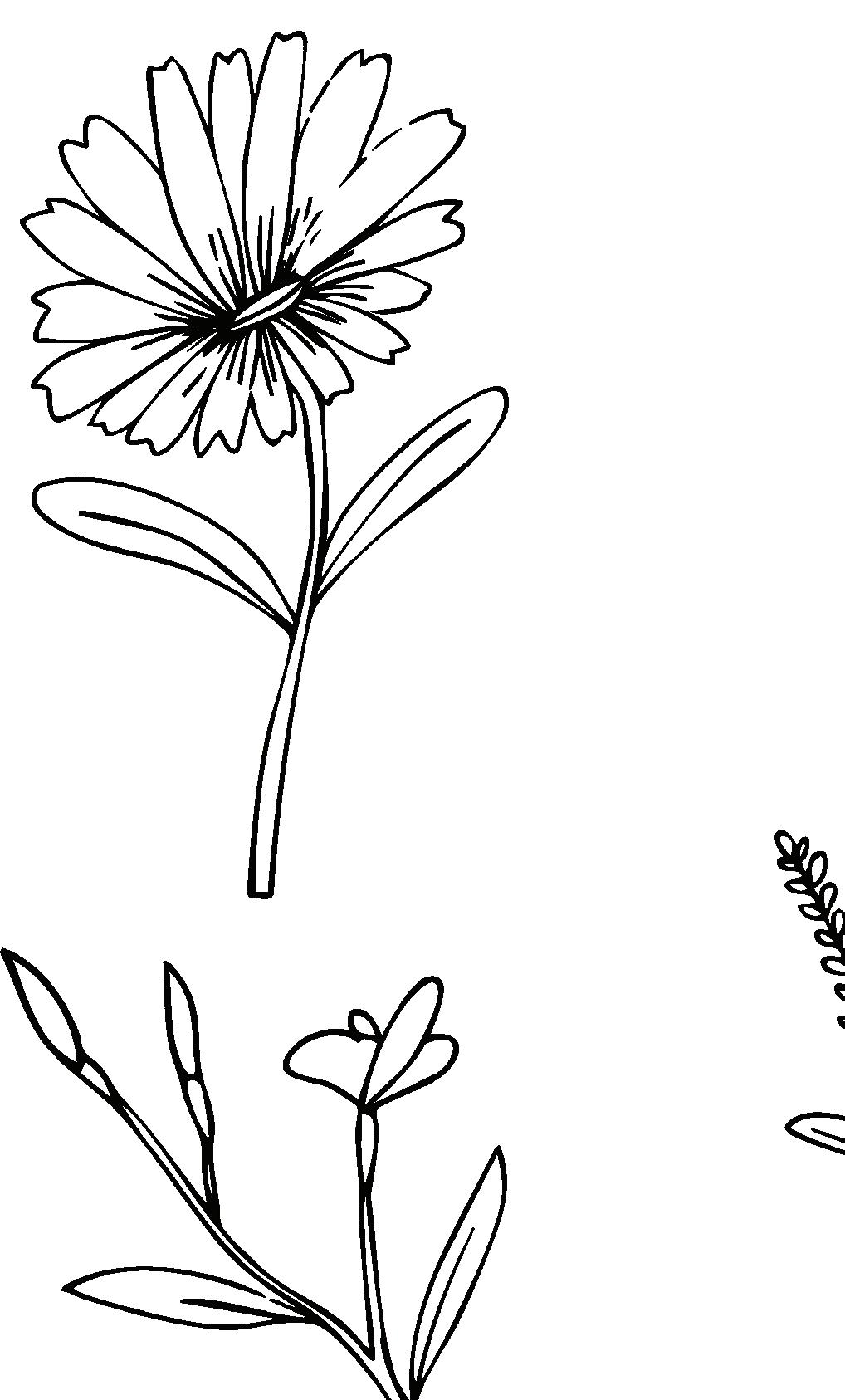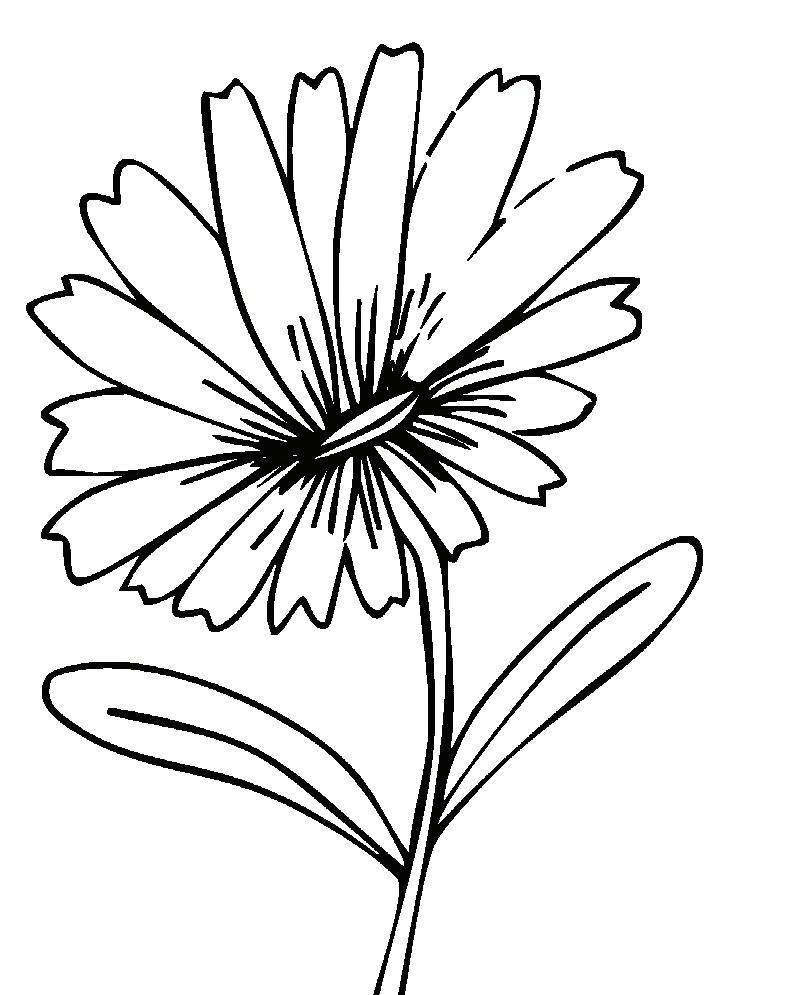







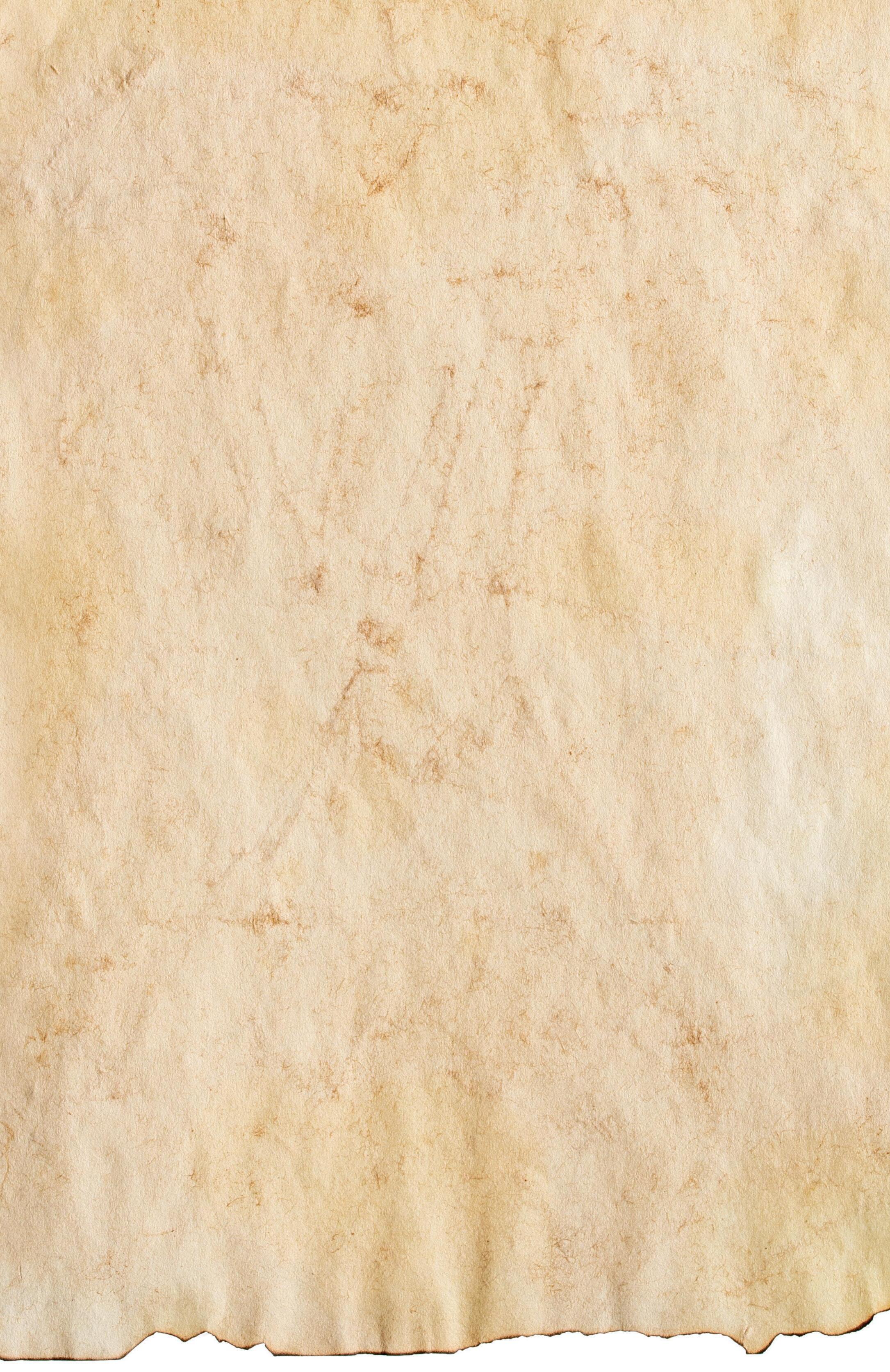
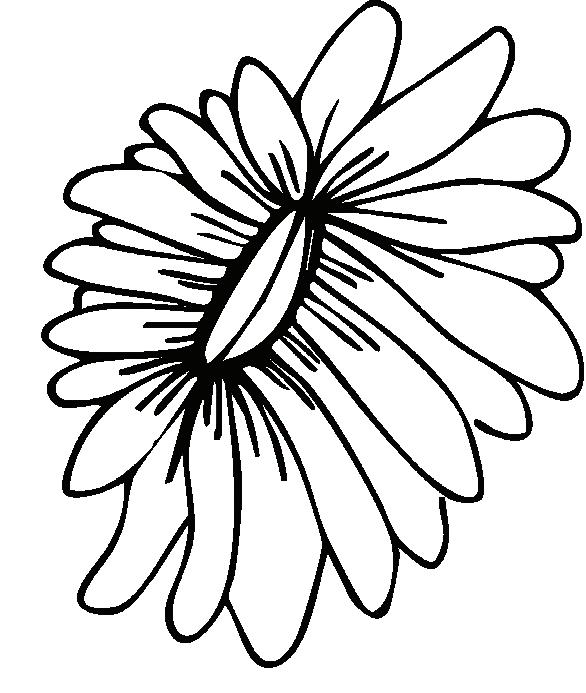

The Eyrie is a literary/arts journal by Eastern Maine Community College to showase student work. This issue highlights execptional writers, trades people, and artists from across the campus.
Heather Magee Anna Arquette
Haley Hudson Cover Design Page Design
Katryvna Allen
Agbuya, Naomi Allen, Katryvna Allen, Laura Berry, Mikayla Burnham, Samue Fields, Nicole Fitzpatrick, Alexis Gott, Ryanne Grenier, Max Hudson, Haley Jipson, Ryan
Knowles, Aidan Mowry, Aidan Orcutt, Ella Pelletier, Emily Pinto, Dominic Ridel, Melissa Roby, Benjamin Ruiz, Olivia Smart, Sara Welch, Keilani Young, Veronica

© All works in this journal remain the sole property of their owner and may not be reprinted without permission.








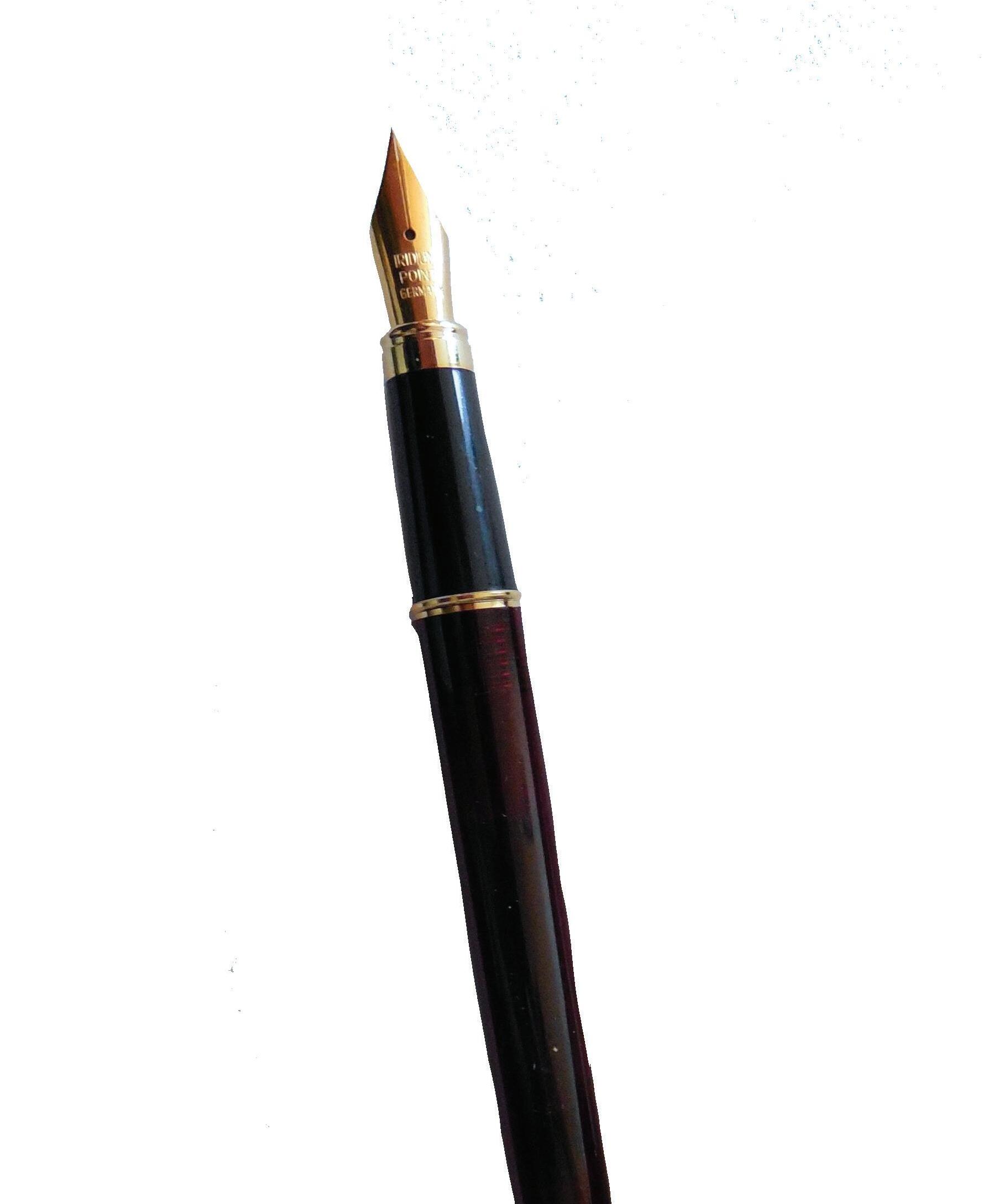

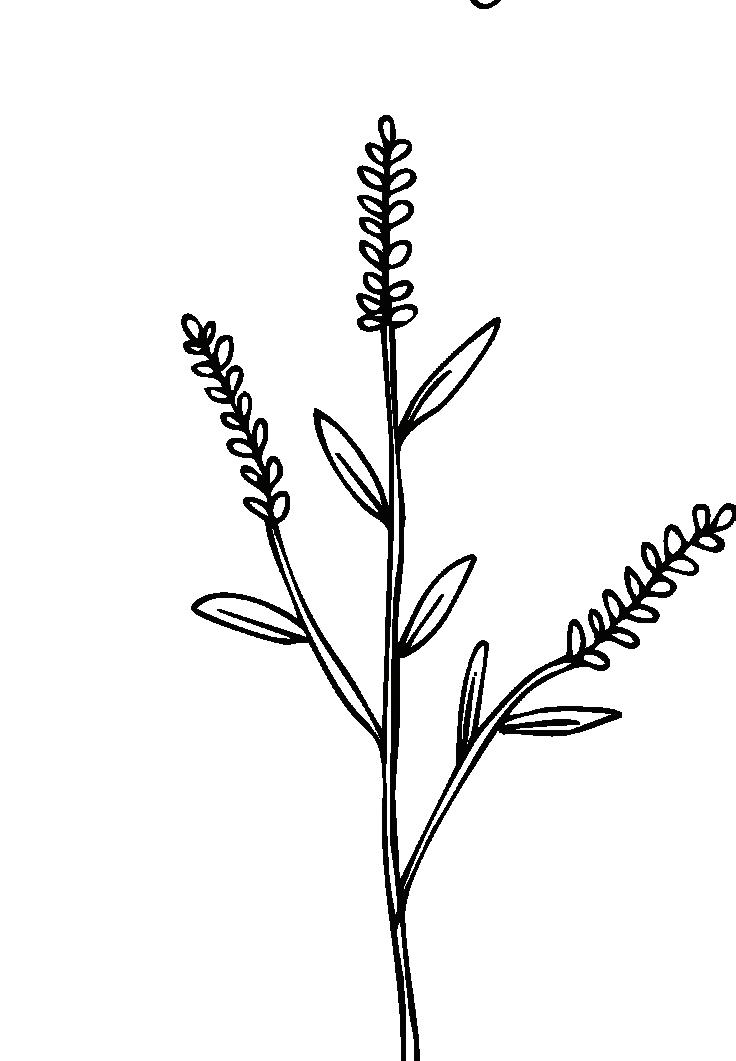
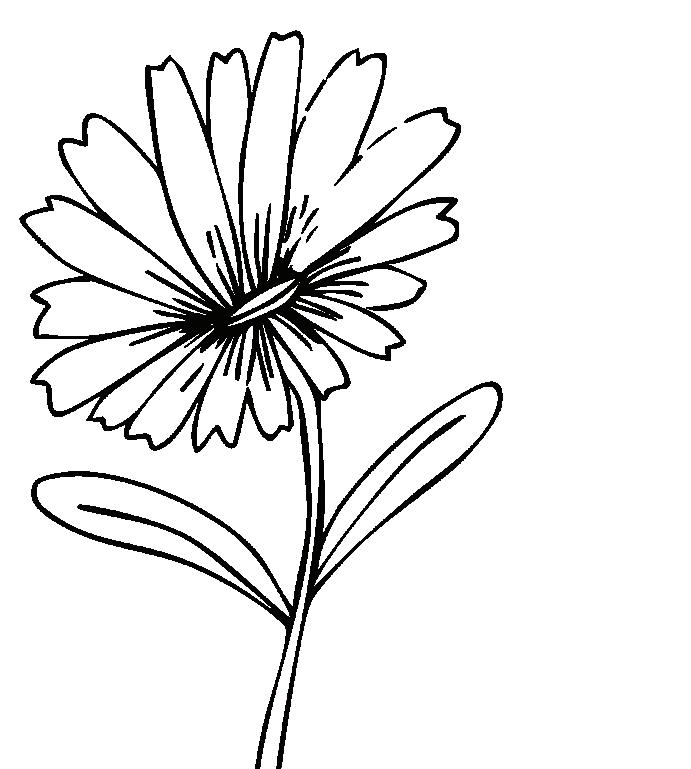


Charles Manson
By: Jay Swett
The assignment was to be done with songs that helped influence Manson. There was a list given to us and we had to choose and research the topic and how someone like The Beatles incorporated their songs and what Manson thought about them. I had to analyze how Manson thought and how he twisted the music to gather his followers.
Songs are one of the most influential types of media that have been around for centuries. For instance, they have influenced how people feel and interact with the world around them. Cult leaders can use music to manipulate others and indoctrinate them into whatever belief systems they hold at any given time. This paper will use what is called critical listening to explore key themes associated with Charles Manson’s vision for Helter Skelter by the Beatles. Seven songs by three different artists will be used to analyze the patterns and worldviews Mason held.

People use music as a symbol and a label of their own values, attitudes, and self-perceptions influenced by psychological functions of music such as expressing emotions, aesthetic enjoyment, entertainment, communication, physiological response, and symbolic representation. ( Hargreaves and North, 1997). There are many ways to interpret the song “Cult of Personalities” by the band Living Colour. There are lines throughout the song that talk about people of importance, “like Joseph Stalin and Gandhi” is an example. One interpretation is good versus evil. Gandhi was one of the most peaceful people that society knows by name. Meanwhile, on the other end is Stalin, Stalin was a politician in Russia during the 1920s and up until his death. He was a dictator who killed six million by way of mass murder. Overall over 9 million were killed during his reign. Using this song, charismatic authority can be shown through the lines “You gave me a fortune, you gave me fame. I’m every person you need me to be.” This shows that the leaders and fans can use this to make it seem like they gave the singer everything, all they are asking is that they trust him with everything. The success of everything is thanks to them but they need to trust him. The song also shows psychological resonance through the lines “ I know your anger, I know your dreams”. The singer mentions these to get the public on his side. He makes it so that they believe that they have been through the same things, and have felt the same and creates the illusion that the singer is the same but better so to speak, that he can sympathize with them. They create the idea that they should be looked up to for the accomplishments they sang of.
Manson was a cult leader in the 1960s who took inspiration from many songs. One is Helter Skelter by the Beatles, released in 1968 on their second album named The White Album. Manson took the song and interpreted it as chaos, which is the definition of the term in the title. He believed that the term




Helter Skelter was being referred to in its original context of imitating confusion and chaos (Martin)... To him, there were many lines that he thought talked about the war and how started the racial war, however, the lines “ I’m coming down fast, but don’t let me break you”. The term Helter Skelter became popularly associated with after the murders. One of the family members who were in Mansons Cult decided to murder the LaBiancas and took blood and wrote on the fridge “Helter Skelter” as a message to those who found the body (Linder,2007). During this murder, there were many messages written in blood like the words “Death to Piggy” (Linder, 2007) on the wall. Manson took the song Piggies to describe members of society more often, he would often quote “What they need’s a damn good whacking”. He would use this to manipulate his family into believing that society was the “piggies’’ and that they needed punishments, “a damn good whacking”. He would use Revolution 9 and say that it used the bible to interpret how the world would react to the race war. The book Revolution is about the apocalypse and what would be the result. He believed that both the songs Revolution 1 and Revolution 9 were telling him about the bible verses and how to interpret them.
The ‘60s held a lot of conflict with the black-and-white culture. In the early ’60s, there was Martin Luther King Jr., his walk in Washington, and his death in 1968. In January of ‘69, there was the first black woman to serve in Congress. Manson thought that this was the start of the race war and in his mind, he believed that the “blacks would win that war and need his family for guidance”. (BBC, 2017). Manson wanted to shape the way that society remembered the violence that the race war would cause and that his family would help reinvent America after.

In the 60’s the Beatles were one of the most popular bands worldwide. Their music was changing how society viewed


each other, they made it so that society could “shake the drab conformity of the mid-century consensus.” (Stephans,2021). They became popular when J.F.K. was shot and they wanted to help America shake themselves out of the state of shock and sadness. They wanted change to happen and made it known by their three songs all labeled with some type of “revolution”. In their song Revolution 9 they have the lines “ Exposure can be a difficult thing”. With the exposure to change that the Beatles showed the United States there was some difficulty with it. This is due to the fact that change is oftentimes the most difficult concept that humanity deals with. During the time of the Beatles, there was much change in the United States and Manson wanted to have that change taken to the extreme. Manson developed a following and believed that the family were the chosen few who would make it out of the apocalyptic event. With the family, they thought of Manson as the apostle of God and that he would help them reinvent the world. Manson thought that the family would go into hiding and after would become the leaders of humanity, lead the race that won the war. “ We tried but they didn’t want us, you are the chosen few”. He also took ways to kill his victims. Both talked about cutting the wires to the start of the violence, in the song Devil’s Work by Uncle Acid and the Deadbeats, the opening line is “It was late at night when I cut the wire”. In the first murders, there seemed to be inspiration from that line when one of the ‘family members’ cut the telephone wires to the Tate’s house (Linder, 2007). The Tate’s were the first victims in the two nights of murders. That same night the family went and killed them, the group had a man named Tex who was the only one to know the whole plan for the night. Tex who had started the murders by climbing the wires “ I climbed the magic pole until I reached no higher, all the lines to safety were slashed away”. With the cut of the wires, there was no way for the cops or anyone to be called. Devil’s




Work seemed to be where the Manson family got ideas for their malicious activity.
BBC. (2017, November 20). Charles Manson: Messianic leader of a death cult. BBC News. https://www.bbc.com/news/ world-us-canada-36091052
Hargreaves, D. J. & North, A. C. (1997): The Social Psychology of Music. Oxford: Oxford University Press.
Linder, Douglas, The Charles Manson (Tate-Labianca Murder) Trial (2007). Available at SSRN: https://ssrn.com/ abstract=1029399 or ` http://dx.doi.org/10.2139/ssrn.1029399
Martin, G. (n.d.). “helter-skelter” - the meaning and origin of this phrase. phrases.org.uk.
National Archives and Records Administration. (n.d.). Shirley Chisholm (November 30,1924 - January 1, 2005).
National Archives and Records Administration. https://www. archives.gov/research/african-americans/individuals/shirleychisholm ://www.phrases.org.uk/meanings/helter-skelter.html
Stephans, R. (2021, December 10). The Beatles reshaped American culture, explaining their enduring ... Washington Post. https://www.washingtonpost.com/outlook/2021/12/10/ beatles-reshaped-american-culture- explaining-their-enduringappeal/











This is my definition essay I had to do for English 101 10 College Composition. I decided to choose Viral vs Bacterial as my topic. I chose these two for my definition essay to compare them and show the differences between Viral and Bacterial by using their definitions and using medical terminology and sources to back up my statement. In this essay I explain how Viral is different
Viral and Bacterial infections are different: some people confuse the two when they are sick and don’t pay attention to the differences between them. {The definition of a bacterial infection is any illness or condition caused by bacterial growth or poisons.} {While the definition of a viral infection is any illness someone gets from a virus which is a small germ that uses your cells to reproduce.} Three ways we can tell the difference between them is by focusing on the symptoms, the diagnosis, and
One of the common misconceptions that confuses the two is that both of them can be contagious. But one thing we have to
According to What’s the difference between bacterial and viral infections? by Kristeen Cherney “Examples of some bacterial infections are strep throat, gonorrhea, tetanus, bacterial

food poisoning, urinary tract infection or tuberculosis. While some examples of viral infections are COVID 19, influenza, common cold, chickenpox, and warts” (Healthline) These are some examples of illnesses, this relates to the topic because we know what the illness is but we still don’t know whether it it’s a bacterial or viral infection until after we figure out the symptoms. The symptoms for an example of the bacterial infection strep throat are swelling of the lymph nodes, a sore throat, white dots on the back of your throat, and a potential cough, this bacterial infection is contagious and can be transmitted by coughing, sneezing, not washing hands, or drinking/eating after someone. While the symptoms for an example of the viral infection common cold are headaches, fatigue, cough, runny nose, sore throat, body aches and chills, this viral infection is also contagious and can be transmitted by not washing hands, airborn or direct contact with people or contaminated objects, coughing, sneezing, and eating/drinking after someone. Kriteen Cherney states, “you may have developed a bacterial infection if symptoms last longer than 10-14 days, symptoms continue to get worse rather than improve over several days, or you have a higher fever than normally observed with a cold” (Healthline). Using these steps and watching out for them can help us determine whether or not we have viral or bacterial infection when we are sick.
Another way we can determine if someone has a bacterial or viral infection is focusing on the diagnosis of the illness. According to Kristeen Cherney in the article Healthline “How doctors diagnose bacterial and viral infections are physical exams, history of symptoms, recent travel history, current epidemics and pandemics in the area, mucus, saliva, urine or any other cultural symptoms” (Healthline) She explains ways we can find out whether or not someone has a bacterial or a viral infection, this ties in to the topic because it shows the differences in diag-




nosis for the specific illness. Doctors can also take samples of blood, mucus, urine, or saliva to determine the type of illness or infection someone has. To determine whether or not it’s a viral or bacterial infection based on the two examples I stated above. If someone has strep throat they should see a doctor to get an oral swab or use a popsicle stick to look at the back of your throat to determine whether or not someone has strep. While the diagnosis of the example common cold would be seeing a doctor and then taking tests to make sure it’s nothing more than a cold. Another way people try to figure out on their own if they have a bacterial or viral infection is by looking at the color of their mucus. But according to Kristeen Cherney “ You should avoid using mucus color to determine whether or not you have a viral or bacterial infection.” She also states that “There’s a long-held belief that green mucus indicates a bacterial infection that requires antibiotics. In fact green mucus is actually caused by substances released by your immune cells in response to a foreign invader” (Healthline) This shows that if your symptoms worsen you should get it checked out by a doctor and not try to guess at home.
Next we would find out the difference for treatments between a bacterial and viral infection. In the article by Kristeen Cherney she states that “There’s no specific treatment for many viral infections. Treatment is typically focused on relieving symptoms, while your body works to clear the infection” (Healthline) She states that for the treatment of viral infections require mainly fluids and rest, and some over the counter pain relievers and cough medicines. This ties into the topic because it states how a bacterial and viral infection are different. So for the viral infection example the common cold there wouldn’t be a specific treatment for it, the doctor would just say to make sure the person sick gets enough rest and fluids like water or gatorade to help alleviate the symptoms or have the person take pain reliev-



ers or cough medicines to help as well. While for the bacterial infection example strep throat will worsen without proper treatment so the doctor would prescribe antibiotics to help alleviate those symptoms and after around 24-48 hours after taking the antibiotics the person shouldn’t be contagious anymore. Kristeen Cherny states some ways we can prevent bacterial and viral infections, “Practice good hygiene by washing hands before eating, and after using the bathroom, touching your face or hands if they aren’t clean, and sharing utensils. Get vaccinated like measles, influenza, tetanus, COVID 19, whooping cough. Don’t go out if you are sick, stay inside to help prevent transmitting to other people. If you do need to go outside make sure you wash your hands. Practicing safe sex by wearing condoms or other barrier methods to prevent sexually transmitted diseases, Making sure your food is cooked properly like making sure all meats are cooked to the proper temperature and washing raw fruits and vegetables, and protecting against bug bites by using insect repellent if you’re going to be outside with bugs that may potentially cause a disease if they bite you” (Healthline) Are all ways we can help prevent becoming sick or passing our sickness to others.
Viral and Bacterial infections are different. {The definition for a bacterial infection is any illness or condition caused by bacterial growth or poisons.} {While the definition of a viral infection is any illness someone gets from a virus which is a small germ that uses your cells to reproduce.} We can determine this by focusing on the differences between the symptoms, the diagnosis, and the treatment of a bacterial or viral infection. This can help people make sure they know what type of illness they have when they are sick. By defining the differences between a bacterial and viral infection to help others understand that they are different and they aren’t all just the same. Each type of illness can have different symptoms, diagnosis, and treatment. It’s best



to figure this out as soon as possible so we can get the right treatment as soon as possible so we don’t spread germs and get others sick.

Work Cited
Cherney, Kristeen. “What’s the difference between Bacterial and Viral infections.” Healthline, Kristeen Cherney, 20 4 2020, https://www.healthline.com/health/bacterial-vs-viral-infections#treatment.
Accessed 24 9 2024.



By Aiden Folsom
Hello, my name is Aiden Folsom. I am from Anna Arquette’s English 101 class where she recommended I send you my second essay for publication. This assignment was to write an exposition essay with the purpose of shining light on a particular topic of choice. Thank You. I spent many years of my life crippled by a particular fear. This was a fear of staying home alone. It served as a considerable barrier in my life as it resulted in me pretty much having to tag along with my parents any time they took trips, even the ones where I really did not want to go. The primary reason I was afraid to stay home alone was the prospect of what might happen to me when I didn’t have my parents to keep me safe and was left to fend for myself, entirely unsure of what I could do. I am of course discussing the prospect of home invasions. Needless to say, the thought of someone pulling up in the driveway, all the while I stood alone in the house, waiting for someone, anyone, to exit their vehicle and do who knows what to me, did not sound like my idea of a good time. For a very long time my parents tried to convince me that the risks I described were little more than fantasy, and that we weren’t likely to be anyone’s target. After all, it’s not as though we were rich, well known, or had any kind of longstanding feuds with the neighbors, essentially meaning we were more or less left alone and I could put these worries to rest. My parents were understanding for a while though, either letting me come along on various trips, or getting my grandfather to come and babysit whenever they were looking to spend some time out in town just the two of them. This became a rather large hindrance as I never really got to have any time to myself around the house, always having to either be around my parents, or be constantly afraid. Ultimately it took nothing short of being forced to stay




home multiple times, despite my passionate protests, that finally shook it off and left me feeling freer than ever before. Fear is one of the largest and most difficult barriers in life, holding people back from many things. Things many people are afraid of include public speaking, the power of nature, failure, and seemingly impossible predicaments.
One such crippling fear that manifests for various reasons, is the prospect of public speaking. Many people have their own individual experiences with said apprehension, the reasons varying depending on the person in question. A notable factor is that most feel a heightened sense of self-consciousness when they realize that onlookers are in fact potentially judging them, as the website Grades Fixer points out when giving an account of this same feeling, “I fear that they will judge me based on my material, how my voice sounds or how I present myself” (The Fears in My Life). When discussing the circumstances surrounding public speaking in particular, it is important to consider that the playing field one steps onto is not a level one. When someone goes to stand and speak for an audience, whatever the reason may be, they have willingly subjected themselves to a possibly quite unforgiving cross examination in which their every move or slip up matters and has great potential to affect the audience’s perception of them long after they step off the podium. However, the fact of the matter is that while it is understandable for one to feel scared of the situation public speaking puts them in, the inability to do so can still prove a significant barrier that withholds many possibilities. There are quite a few situations in which the ability to speak to a crowd is very important, such as a graduation, a wedding toast, an important announcement, or any other such occasion in which it would be to the beneficial for one to have their voice heard. All this to say, public speaking is a strong fear for many people that often holds them back from many exciting and helpful possibilities.



Fearing the power of nature can also hold someone back from their potential. While some who think of nature often picture it as a beauty to behold, others see it as a very dangerous and scary prospect indeed. For many, thoughts frequently surface of the food chain, carnivores, and the fearsome powers of the wild. It is true that humans nowadays are comfortably sitting as the well-established top species of the food chain. That being said, those who spend much of their time in naturally preserved spaces are often reminded of how it feels to be viewed as a lower creature in the system. Spending time in these wild lands can and does serve as a sobering reminder of how fragile and unpredictable life really is. When discussing a wild animal encounter on a camping trip, an essay on the Writing Bros website states “It had etched a memory that would forever remind me of the unpredictability of life and the thin line that separates us from the primal forces that once ruled our world” (The Scariest Moment of My Life). However, while there certainly are dangerous and powerful creatures in the natural world, this does not mean there are not still very special benefits to experiencing nature. After all, there are great beautiful aspects out there that are very worth exploring, with benefits that could be all but lost if one is too afraid to try and experience it for themselves.
There is also the ever-present anxiety surrounding failure and simply not being good enough. This fear is unique as rather than being afraid of a certain experience involved in a particular undertaking, it is the case that one is frightened of the potential outcome. It is worth noting that the result of attempting a particular task and lacking success can either be a minor inconvenience, or a life-or-death risk, depending on the endeavor in question. If someone is enclosed in a tight space with seemingly no way out for example, failure to escape could prove disastrous as Philip Weiss recounts, when discussing said




phenomenon “A Los Angeles man is discovered, bloodshot, banging the trunk of his white Eldorado following a night and day trapped inside;” (Weiss 322). That being said, trying to demonstrate a simple party trick and failing isn’t likely to cause too much tragedy aside from a little embarrassment. Despite this, fear is not always rational, and the potential outcome on paper is often not in line with how one feels about it. The most prominent obstacle presented by such an apprehension is when people refrain from ever trying something they aren’t confident about. After all, if we never tried our hands at something we’d never done, we would never know what we were capable of, and what new skillsets and possibilities lie before us in the long run.
For some there is also a looming fear of predicaments, or situations where they feel trapped either literally or metaphorically. Much of this often comes from people looking to their own creativity as a source of comfort and reassurance, trusting that they possess the necessary intellectual means to sufficiently care for themselves should the need arise. However, everyone’s creativity has its limits, and not every situation has an immediate solution. Certain occurrences are what would simply be referred to as no win scenarios, where there really isn’t anything that can be done to immediately rectify one’s own ordeal. Fear surrounding finding oneself in a bind is certainly nothing new, “Every culture comes up with tests of a person’s ability to get out of a sticky situation. The English plant mazes. Tropical resorts market those straw finger-grabbers that tighten their grip the harder you pull on the stem, and the Viennese intellectuals gave us the concept of childhood sexuality-figure it out, or remain neurotic for life” (Weiss 322) according to Philip Weiss when discussing the predicament of being locked in a trunk. That being said, while being scared of scenarios with seemingly no solution can certainly be reasonable to an extent, it is potentially problematic if one is



never willing to risk getting to a point where they are not sure what to do. After all, much of the technological advancement we have experienced throughout history can largely be credited to creative people trying, failing, getting stuck, trying again, and later succeeding. When considering the many riddles and tests people have come up with over time, it is likely meant to serve as a way for others to test their problem-solving skills in a lower stake setting. This can be a great way to gain the confidence needed to take the sometimes unpleasant, but necessary risks life throws their way.
Fear is clearly a struggle for quite a few people out there. It can often be one of the most impeding things in life, keeping us from many potential experiences. These fears, whether or not they include things such as the prospect of public speaking, the powers of nature, trying and failing, or being in a bind, they frequently hold people back from recognizing their potential. However, while being scared isn’t necessarily something we can control, our actions are. There is much truth in the old saying, courage is about being scared, but doing it anyway. We often think that in order to be brave, we need to first not be afraid, but the truth is it usually takes facing fears head on to conquer them. After all, I didn’t stop being afraid of staying home alone until I finally went ahead and did it, resulting in much more control of where I get to be, when I want to. Being scared is one of life’s most difficult obstacles to overcome, but in putting it behind us, we are paving the way for untold freedom and success.
“The Fears In My Life.” GradesFixer, 14 Jun. 2020, gradesfixer.com/free-essay-examples/the-fears-in-my-life
“The Scariest Moment of My Life: A Brush with Fear.” WritingBros, 29 Aug. 2023, writingbros.com/essay-examples/thescariest-moment-of-my-life-a-brush-with-fear/




Weiss, Philip,” How to Get Out of a Locked Trunk.” Back to the Lake: A Reader and Guide for Writers, edited by Thomas Cooley, 5th ed., W.W. Norton, 2024, pp. 321-26.



By Grace Porter
Attached is my submission for the Eyrie. Below is an essay written for my English 101 04 class. It was an assigned expository style essay, and the objective was to expose a truth about rivalries and/or phobias.
Pepsi and Coca-Cola; Batman and Joker; the Red Sox and the Yankees; what do these all have in common? These are all classic rivalries that have been battling for decades. Rivalries have been around for centuries; Cain vs Abel, the Romans vs the Greeks. They reveal a part of humanity that strives for a sense of superiority over others. Competitions such as these lead us to ask the valuable question “What makes a good rivalry?”After taking a closer look at each adversary, we can see they all have three things in common with their competitor. These three elements combined reveal the formula for a classic rivalry. Without any of these steps, a rivalry will lack depth and strength. To begin our analysis, we must first look at the similarities of each set of rivals. Pepsi and Coca-Cola are both very popular soda brands, Batman and Joker are both comic book characters, and the Red Sox and Yankees are both very well-known baseball teams. They all share a category with their fellow contender, which is vital to a fair match-up. The next thing required for a proper rivalry is the spirit of competition. They must be competing for a prize of some kind. Such as customers, fans, the approval of others, or even Gotham city. Without a goal, their fight is in vain. The last element is backstory. Whether this be one copying another, fighting for control, or a controversial trade of a famous player; each started their feud for some reason. Any good rivalry requires a worthy opponent, a promise of reward, and a personal history.
Let us start with the opponents themselves. For a rivalry to be




adequate, the two competitors must be evenly matched. It is not much of a battle if one is significantly stronger or more popular than the other, it will be over before it begins. Any longstanding rivalry will prove this. When we look at each of the examples presented earlier, this is made clear. For instance, look at Coca-Cola and Pepsi. It wouldn’t be fair to compare Coca-Cola to a small local brand because it is really no contest. Coca-Cola will win every time due to the company’s large size and popularity. However, when we look at Pepsi and Coca-Cola, we see that they are both massive companies, each with a solid fanbase: “Both Coca-Cola and PepsiCo are global leaders in the beverage industry, offering consumers hundreds of beverage brands” (Gorton, Coca-Cola vs. Pepsi Business Models). Because of their reach, these brands both have large audiences. This levels the playing field. It is also important to add that each company owns additional popular soft drink brands as well, boosting both the sales and the stakes of their competition. This is what leads the companies to such a constant back and forth struggle. The feud between Pepsi and Coca-Cola is a perfect example of the first element of a good rivalry; evenly matched adversaries. As we further analyze these examples, we stumble across our next point, the promise of reward. We can look at any of the previous examples to help illustrate this, but the one I am going to focus on is Batman and Joker. These two repeatedly scheme, fight, and risk loss; for what? Why is all this turmoil even worth it? The answer lies in our second element, the promise of reward. A man sworn to protect his city, Batman (Bruce Wayne) looks after his beloved Gotham tediously. He is determined to ward off all threats to the peace and well-being of the people. His reward is in seeing the city his family helped build secure and safe. He genuinely cares for many of the citizens and seeks to protect them. Batman also has strong morals that lead his decision-making. Douglas Wolk expresses this in his essay entitled “Superhero Smackdown”: “Most superheroes’ goal are not to destroy their rivals, but to overtake and contain them”. (427)



Batman is no exception to this. On the other hand, Joker has no morals and looks for his reward in a couple of ways, one being in the satisfaction of triumphing over Batman. He strives to be the downfall of a seemingly infallible figure to the public. He sets elaborate traps designed to cause Batman to compromise on his strict morals. He does so in an attempt to make the people of Gotham watch the hero they put up on a pedestal fall. Joker also aims to prove that the world is as insane as he is, which will in turn bring the validation he so desperately seeks. That is his prize in this seemingly endless struggle against his foe, Batman. Both are seeking a reward in their own way and will only accomplish it by the defeat of the other. This is crucial in a classic rivalry. Without a goal or prize the competition has no stakes, therefore each party may not compete to the best of their ability. Now that we have established the first two qualifications of a solid, well-balanced rivalry, we must conclude with arguably the most important one. This is our final element, the backstory. This is the source of a feud, and without it a true rivalry cannot be created. Take for example, the Red Sox and the Yankees. They have had animosity towards each other for years, but why? Well as it turns out they have a personal history with one another. It all started in 1919, when the owner of the Boston Red Sox traded away the famous player Babe Ruth to the New York Yankees. After this, the Yankees won many world series with their new star player, while the Red Sox failed to win any of these championship games for the following 86 years. Eventually, the Red Sox came back to win, but the damage was done. This pattern of defeat inevitably pitted the two teams against one another, not to mention all their loyal fans. Now their rivalry is more than simply losing a game. There is a deeper meaning behind their battle, and it has been years in the making. Some rivalries start from a singular event; however, some take longer to develop. In many cases, rivals start out friendly with one another. Douglas Wolk also expresses this in his essay, when he states: “Still, they




[Marvel and DC] used to be more cooperative rivals” (427) he goes on to expound on this by informing the readers that the two companies would go on to have a string of stories in their comics that aligned and would often good-naturedly poke fun at one another. Nowadays, the two compete for profits both on the shelves and in the theater. These companies and baseball teams show that personal history between competitors is a crucial element in the development of a rivalry.
For these reasons we can ascertain that the three qualifications for a strong, well-formed rivalry are: evenly matched competitors, a goal, and a personal history with one another. All three are vital, and any rivalry lacking one of these will fail in some capacity. A feud without equally matched sides will be over before it begins, and honestly no fun to watch (which is often the goal for many sports teams and comic book companies) A competition without a prize is in vain, and without a personal backstory a true rivalry cannot even begin. Rivalries can be found all over, whether it be the battle for sales between two major corporations like Marvel and DC, or two local high school sports teams. A healthy rivalry is one that inspires the spirit of competition, such is often found between brothers or friends. The two will battle to the best of their ability, but accept defeat with grace, and humility. They do not wish for the other to become harmed. However, these feuds can and often do become bitter. This is generally caused by those involved developing an unhealthy need to win, or the competitors showing a lack of good sportsmanship like behavior toward one another. Ultimately, these three elements can be found in some way in every type of rivalry and are an excellent tool in their analysis. By examining them we can determine whether it is a true, long-lasting rivalry, or just a short-lived squabble.



Works Cited
Gorton, David. “Coca-Cola vs. Pepsi Business Models: What’s the Difference?” Investopedia, 29 Aug. 2023, www.investopedia. com/articles/markets/081415/comparing-cocacola-and-pepsis-business-models.asp.
Wolk, Douglas. “Superhero Smackdown” Back to the Lake, edited by Thomas Cooley, W. W. Norton & Company, 2024, p.427.



Savanah Quirion

Comparative Analysis of Family Peace Initiative and Restorative Justice Approaches in Domestic Violence Intervention Programs
Amidst the ongoing battle against domestic violence, the transformative potential of Domestic Violence Intervention Programs (DVIPs) stands out as a vital force, offering both justice and healing for victims while providing perpetrators with a genuine chance at reform. In the United States, nearly 1 in 4 women and 1 in 7 men will experience severe physical violence by an intimate partner in their lifetime (Leemis 2022). DVIPs are structured initiatives designed to address and mitigate the effects of domestic violence, providing support and resources to both victims and perpetrators with the ultimate goal of breaking the cycle of abuse by changing the behavior of the perpetrator rather than focusing on punishment. Comparing different methods of Domestic Violence Intervention Programs (DVIPs) is crucial to identify the most effective approaches for reducing recidivism, enhancing victim satisfaction, and promoting longterm behavioral change. Two methods are the Family Peace Initiative (FPI) and Restorative Justice (RJ) approach. The FPI utilizes a trauma-informed, relationship-based approach with a structured curriculum and group sessions, leading to significant reductions in recidivism and high levels of victim satisfaction. It also promotes long-term behavioral change, reducing PTSD, anxiety, and depression among survivors (Family Peace Initiative). In contrast, the RJ approach focuses on repairing harm through inclusive, community-based dialogues, emphasizing accountability and reintegration. RJ programs also demonstrate reduced recidivism rates and high victim satisfaction, with longterm benefits including improved quality of life and increased



safety for survivors (Bureau of Justice Assistance). While both approaches share common goals and methods, they differ in their implementation, community involvement, and specific challenges.
The Family Peace Initiative (FPI) is a Domestic Violence Intervention Program (DVIP) designed to transform participants’ behavior and support victims through a holistic, trauma- informed approach. The program is based on core principles such as accountability, empathy, and compassion. FPI operates through a structured program that includes individual and group therapy sessions, educational workshops, and ongoing support. The process begins with initial assessments to understand each participant’s specific needs and circumstances. Regular therapy sessions address underlying issues such as anger, control, and past trauma. Participants also engage in support groups, providing a safe space for sharing experiences and learning from others (Family Peace Initiative). Continuous follow-up and monitoring ensure progress is tracked, and additional support is provided as needed. FPI is implemented in various settings, including community-based programs, court-mandated programs, workplace programs, and schools. These settings collaborate with social services, law enforcement, and healthcare providers to create a comprehensive support network.
Evaluations of FPI through statistical outcomes and case studies reveal its impact on both victims and perpetrators. Studies show that FPI participants have lower recidivism rates compared to those in traditional batterer intervention programs. For example, a study in Kansas reported a recidivism rate of close to 15% for FPI participants, compared to 25% for those in standard programs (Domestic Violence Task Force 4). FPI participants also show improvements in anger management, empathy, and communication skills. An evaluation performed by the domestic violence task force for Shawnee County Kansas,




found that 85% of FPI graduates from the county did not have any new domestic violence-related police calls over a six-year period. (Domestic Violence Task Force 4) While this fact does show 15% did reoffend, the average, while highly based on the offenders’ location, is 40% to 60%. (Bureau of Justice Statistics 15) These outcomes illustrate the effectiveness of FPI in reducing recidivism, enhancing victim satisfaction, and promoting long-term behavioral change among perpetrators.
Restorative Justice (RJ) approaches in Domestic Violence Intervention Programs (DVIPS) prioritize the needs and healing of victims over punitive measures for offenders. The primary goal is to repair the harm caused by the offense through direct engagement with victims to understand their needs and address the harm. Offenders are encouraged to acknowledge their actions and understand their impact on victims and the community. This method involves victims directly addressing offenders to discuss the harm caused and agree on steps to repair it (Bureau of Justice Assistance). Community members contribute diverse perspectives, resources, and emotional support, enhancing the effectiveness of interventions. This collective approach aids in the healing process for victims and offenders and strengthens community bonds, promoting accountability and empathy. Recognizing diverse cultural values and addressing systemic oppression are also critical components of restorative justice (Goldman). According to researchers, the victims of offenders who participated in a RJ approach, “...were significantly more satisfied with the process and outcome than those who went through the traditional criminal justice system” (Goldman).
Restorative Justice programs, such as victim-offender mediation and circles of peace, include structured processes designed to promote healing, accountability, and community cohesion. Victim-offender mediation is a three-step process facilitated by mediators. Cases are referred to mediators by courts, police, or probation services. The mediator conducts an initial assessment



to ensure both parties are suitable for mediation and willing to participate voluntarily. In the joint mediation session, a trained mediator facilitates the conversation, allowing the victim to express the impact of the crime and the offender to take responsibility and offer an apology if appropriate. Both parties work toward an agreement on how the offender can make amends, which may include restitution, community service, or other reparative actions (“Violence Treatment” 65).
The Circles of Peace in the Restorative Justice approach involves a structured process designed to promote healing, accountability, and community support. It begins with the facilitator meeting individually with each participant, including victims, offenders, and community members. After this, all participants gather with a facilitator. Participants share their perspectives on the incident, focusing on what happened and why. They then discuss how the incident affected them personally and the wider community, fostering empathy and understanding. The facilitator then guides the group towards a consensus-based resolution, ensuring all voices are heard and respected. After the circle process concludes, continuous support and monitoring ensure participants adhere to the agreed-upon actions and continue to demonstrate accountability. Facilitators conduct follow-up sessions to monitor progress, provide additional support, and gather feedback to evaluate the process’s effectiveness. (National Association of Criminal Defense Lawyers 20)
Studies comparing Circles of Peace (CP) with traditional Batterer Intervention Programs (BIPs) found that CP participants experienced lower recidivism rates for non-domestic violence offenses at 6-month and 12-month follow-ups. (Latimer, Dowden, and Muise) A meta-analysis of restorative justice programs indicated greater victim and client satisfaction compared to traditional legal system approaches (Fulham et al.). Victims reported higher levels of procedural justice and




felt more empowered through their participation. Restorative justice programs have been associated with improvements in client accountability and empathy, with participants demonstrating better emotional regulation and communication skills, contributing to long-term behavioral changes (Fulham et al.). The Circles of Peace (CP) program in Arizona examined 152 domestic violence cases, randomly assigning them to either a traditional BIP or the CP program. CP participants engaged in restorative justice circles, which included victims, offenders, and community members. Results showed that CP participants had lower recidivism rates for non- domestic violence offenses and reported higher satisfaction with the process (Mills, Barocas, and Ariel, 2013). The West Harlem Community Reentry and Restoration Project focused on supporting individuals reentering the community after incarceration, utilizing restorative justice principles. The program involved restorative circles, community support, and individualized case management. Participants reported feeling more supported and accountable, with notable improvements in community reintegration and reduced recidivism (Zablocka et al.). These outcomes and case studies illustrate the effectiveness of restorative justice approaches in addressing domestic violence, highlighting their potential to reduce recidivism, improve victim satisfaction, and foster meaningful behavioral change.
Despite their distinct strategies, the Restorative Justice (RJ) approach and the Family Peace Initiative (FPI) share several core principles and practices aimed at addressing domestic violence effectively. Both approaches emphasize holding perpetrators accountable for their actions and encouraging them to take responsibility for the harm they have caused. They focus on healing and restoring victims and communities rather than punishing offenders. Both methods prioritize creating a safe environment for victims to express their needs and participate in the process. They also engage the community in the inter-



vention process, involving community members in supporting victims and holding perpetrators accountable. Both approaches focus on open dialogue and communication between victims, perpetrators, and community members to address the harm and find ways to repair it. Additionally, both incorporate trauma-informed practices to ensure sensitivity to the experiences of victims and avoid retraumatization, provide education and training for facilitators, and establish strong support networks for victims and perpetrators.
However, the RJ approach and FPI differ in their approach and implementation. RJ focuses on repairing harm through community-based dialogues that emphasize accountability and reintegration, while FPI employs a trauma-informed, relationship-based approach using structured curriculum and group session formats. RJ is highly adaptable to participants’ needs and involves community members extensively, while FPI follows a more structured curriculum with professional support networks. Facilitators in RJ are trained in mediation and restorative practices, while FPI facilitators specialize in trauma-informed care and relationship-building techniques. These differences highlight the unique strengths of each approach in addressing domestic violence.
In terms of effectiveness, both RJ and FPI demonstrated significant benefits. RJ programs have been shown to reduce recidivism rates among perpetrators, with participants being about three times less likely to reoffend compared to non-treated control groups (Strang et al., 2023). Victims in RJ programs often report higher satisfaction due to their active involvement in the process and the emphasis on healing and accountability (Fulham et al.). Long-term impacts of RJ include improved quality of life for survivors, increased safety, and a reduction in community- wide abuse incidents. Similarly, FPI also shows a reduction in recidivism rates, though specific comparable data is less frequently published. Victim satisfaction in FPI programs is




generally high, particularly when the programs provide continuous support and effective collaboration between criminal justice systems and community-based agencies. Both approaches face distinct challenges and limitations. For RJ, ensuring the safety of victims during the restorative process is a significant concern, as there is a risk of re-victimization if not carefully managed. In addition, the success of RJ heavily relies on the genuine participation of perpetrators, which can be undermined by unmotivated individuals (Mills, Barocas, and Ariel 65). Resource and training limitations also pose a challenge, as many programs lack sufficient funding and trained facilitators, leading to inconsistent application and outcomes. Furthermore, community resistance can be an obstacle, with some people skeptical about the effectiveness of RJ in cases of intimate partner violence. On the other hand, FPI programs often struggle with funding issues, limiting their ability to provide comprehensive services. Accessibility is another challenge, particularly for participants in rural or underserved areas, despite the introduction of tele-video groups. The lack of standardized practices across different FPI programs can result in variability in the quality and effectiveness of interventions. Additionally, supporting long-term engagement with perpetrators to ensure lasting behavioral change is resource-intensive and challenging, requiring continuous support and follow-up.
In summary, both the Family Peace Initiative (FPI) and the Restorative Justice (RJ) approach offer valuable methods for addressing domestic violence through Domestic Violence Intervention Programs (DVIPS). The FPI employs a trauma-informed, relationship-based approach with structured curriculum and group sessions, showing significant reductions in recidivism and high levels of victim satisfaction. It also promotes long-term behavioral change, reducing PTSD, anxiety, and depression among survivors. Conversely, the RJ approach focuses on repairing harm through inclusive, community-based



dialogues, emphasizing accountability and reintegration. RJ programs also show reduced recidivism rates and high victim satisfaction, with long-term benefits including improved quality of life and increased safety for survivors. While both approaches share common goals and methods, they differ in their implementation, community involvement, and specific challenges. Addressing these challenges can enhance the effectiveness of both approaches in reducing domestic violence and supporting victims. The examination of the Family Peace Initiative and Restorative Justice approaches in Domestic Violence Intervention Programs reveals their effectiveness in various aspects. Statistical data and case studies highlight the strengths and weaknesses of each method in reducing recidivism, enhancing victim satisfaction, and promoting long-term behavioral change. The Family Peace Initiative shows significant promise in providing structured support and accountability for perpetrators, while Restorative Justice approaches effectively foster dialogue and healing for both victims and perpetrators. However, community resistance and skepticism about the applicability of Restorative Justice in intimate partner violence cases remain challenges that need to be addressed. Both approaches offer valuable insights and tools for improving DVIPs. Future research should focus on integrating the strengths of both methods to develop more comprehensive and effective intervention strategies. By continuing to refine these approaches, we can better support victims, hold perpetrators accountable, and ultimately reduce the incidence of domestic violence and recidivism.




Works Cited
Bureau of Justice Assistance. “Repairing Harm through Community Dialogue.” Bureau of Justice Assistance, https://bja.ojp. gov/news/feature-stories/repairing-harm- through-community-dialogue. Accessed 6 Dec. 2024.
Domestic Violence Task Force. 2022 DV Task Force Annual Report. Squarespace, 2022, https://static1.squarespace.com/static/6524a4da3f377e60923b048d/t/6567 6c507e540e5dd1adab99/1701276755554/2022+DV+Task+Force+Annual+Report. pdf. “Family Peace Initiative: The FPI Approach.” Family Peace Initiative, https://familypeaceinitiative.com/who-we-are/thefpi-approach.
Fulham, L., Blais, J., Rugge, T., & Schultheis, E. A. “The Effectiveness of Restorative Justice Programs: A Meta-Analysis of Recidivism and Other Relevant Outcomes.” Criminology & Criminal Justice, vol. 0, no. 0, 2023, https://doi. org/10.1177/17488958231215228.
Goldman, Robert. “The Use of Restorative Justice as a Trauma-Informed Approach.” Psychology Today, 17 Jan. 2023, https://www.psychologytoday.com/intl/blog/building-resilient-minds/202301/the-use-of-restorative-justice-as-a-traumainformed-approach. Latimer, J., Dowden, C., & Muise, D. “The Effectiveness of Restorative Justice Practices: A Meta-Analysis.” The Prison Journal, vol. 85, no. 2, 2005, pp. 127-144, Quirion https://doi.org/10.1177/0032885505276969.
Leemis, Ruth W., et al. “The National Intimate Partner and Sexual Violence Survey: 2016/2017 Report on Intimate Partner Violence.” 2022. Zablocka, Joanna, Claire Inkpen, Richard Embry, and Jason Hustedt. West Harlem Community Reentry and Restoration Project: Final Evaluation Report. RTI International, 2024, https://cjii.org/wp-content/uploads/West-Harlem-ProjectFinal-Evaluation.pdf.





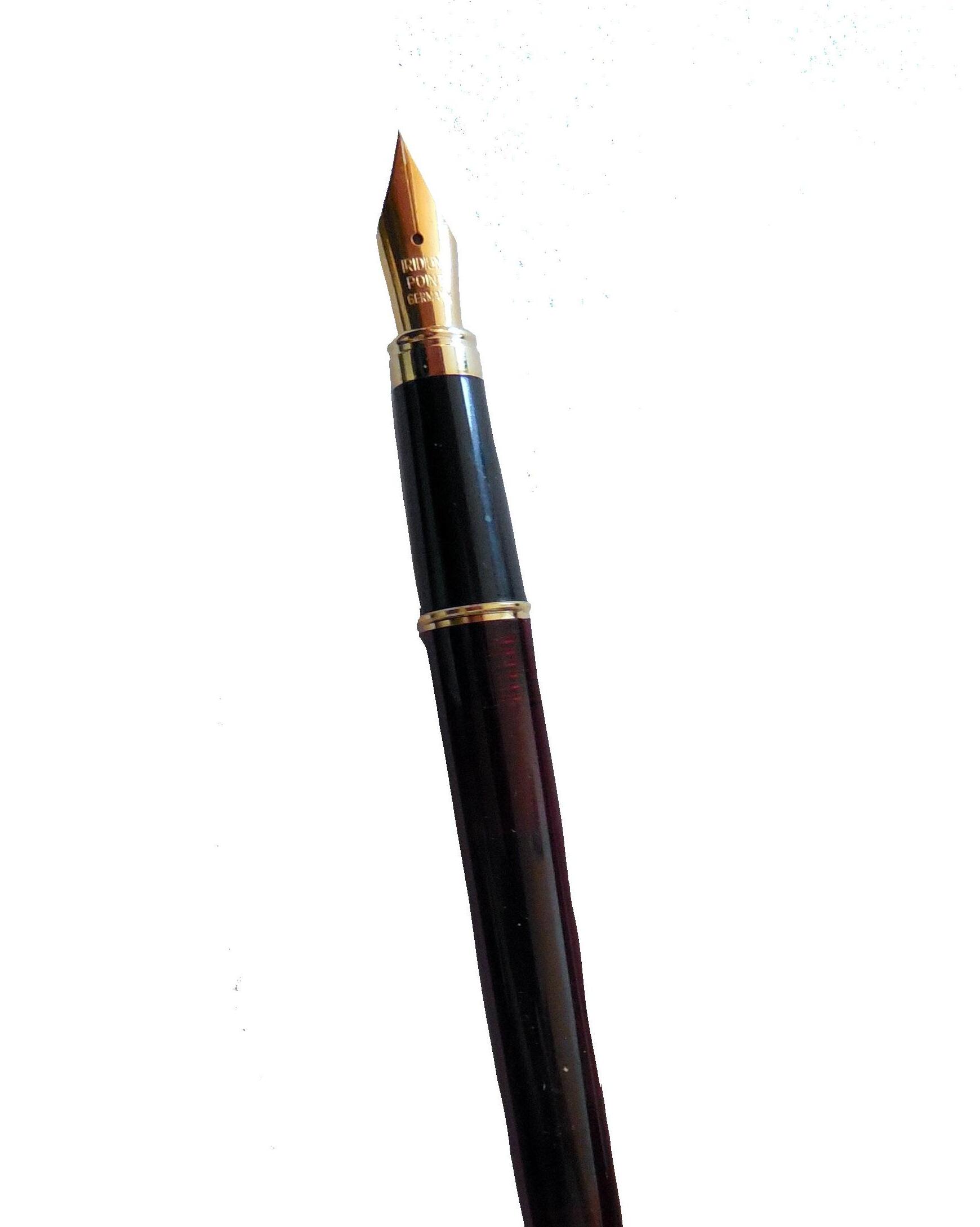



By Krais Cook
This work was done for the class ENG 175 95 Creative Writing, taught by Lesley Gillis. The assignment was to read chapter 3 of the book Serious Daring by Lisa Roney and do one of the writing prompts. I chose to do a prompt about a person in motion. So, I wrote a poem about someone I had recently grown close to. As some additional information about why I wrote the piece, this person brightens my day whenever I end up seeing her, and I strive to have the positive attitude she seems to always have. As I’d like to be the person who can bring others up instead of down, it’s a battle I struggle with, but with writing this poem, I feel like I might be closer to my goal.
Slowly turning, I see the smile, And hear the soft way she says my name. Asking how the day has gone, And what to expect. I tell her the day has been slow, But it might pick up. She turns back and shows her warmth to someone else,




Moving her arms back and forth while talking, Tapping away at a screen. When they leave, she walks off, To grab something perhaps? Or maybe to take a small break. When she returns, She beams with her usual smile, And comments on how some people are odd. The way she walks, The way she stands, It all has an air of practice. And with practice comes perfection, She is everything I wish I was. I wish I practiced like her, To move, to speak, and to be, Closer to perfection.




By Keyaira Hallman
This was written for the final assignment of Creative Writing. The idea was to take some previous writing done during the class semester and build on that. I expanded on a previous assignment where I wrote a mystery movie pitch and turned it into this short story, ‘Cassette Tapes’.
The body laid eerily still. A mess of bones and flesh all piled on top of each other—hardly any semblance of a real person. I could almost see him, how he was before, if I squinted my eyes. The effort that required was too much, my breathing had become manual. Police officers rushed around the scene. Red and blue lights danced across the walls of the warehouse and yellow tape was placed down. Radio chatter was muffled, my senses were focused solely on the body. The body. The body that had once housed a person.
I closed my eyes, ignoring the lump in my throat. A wave of nausea poured over me, the details of his mangled body looping in my head. He was nearly unrecognizable, as if whatever, no, whoever, did this to him wanted him to feel pain. They stripped him of his humanity, his corpse no longer resembling the man I remembered. Save for his navy hoodie, I would not recognize him. That is what hurts me the most, the idea that I cannot recognize him in this form. I found myself keeling over as I performed menial tasks through the day, the image of his blood-soaked hair haunting my memories. The memories of him began to fade, and I knew the frustration of it was building in me, because I would wake up each morning in a cold sweat, only the image of him I was greeted with was no longer clear, but someone entirely different than the man I knew. Worse was the feeling in the pit of my stomach that would slowly consume me as the day went on. I would listen for the birds, but they



would not sing for me, because he wasn’t here and that is who they really wished to sing to. I understood the birds, but they only proved more detrimental to me. I found myself with a tape recorder, recollecting even the smallest memories of him. His favorite meals, places, the adventures we had gone on, our most intimate moments. They all had begun to fade into a requiem of his life, but also a graveyard for the information I knew I was missing, but for the life of me I could not remember. I could remember the exact angle of his eyes, but not his charming smile which I knew I loved. The photos I had of him, though very few, did no justice. I felt myself grasp at straws.
Then, in the early hours of the morning, his case was closed. The police had given up, no evidence proving worthy of finding his murderer. A chill ran down my spine as I sobbed on the park bench, but something else overtook me. A deep and guttural anger. “Red?” I heard, somewhere in the general area. I nearly jumped from my seat, quickly brushing back any tears that were visible. There was a girl, somewhere around my age, but she was holding a cane. She gently lowered herself next to me, placing the cane on her lap. I observed her small movements, careful to keep a wall up. “Yes? How do you know my name?,” she fumbled around for a moment in her pockets, pulling out an image of a face I found familiar. “This is Jose,” she told me, “And I need you to help me find his murderer.,” I scoffed, “Why would I do that?” The previous tears were certainly dry now, my face hot with anger. Not necessarily at this woman, but she was not helping. The girl was now biting back her own tears as she stared at the picture, “I think he may have been murdered just the same as your boyfriend.”
Catatonic shock. My muscles constricted as I thought of the idea. A serial killer? “Do you have any leads on who killed Jose? Do you have proof that they killed my Milo just the same?” I asked the girl, and she solemnly nodded at me. “I’m Afina, by




the way.”
“Great. We’ve got some work to do.”
We quickly became obsessed with the idea of finding the murderer. I knew this was the only way for me to find peace. Hours of research on similar murders and potential suspects consumed my thoughts. Afina felt the pull too, I could tell, but I had to contain my excitement at each turn. Something else was pulling me too, though, a familiarity I did not fully understand. The memories of Milo crackled in my brain like electrical currents firing at the wrong times and in the wrong places, it didn’t matter the time-of-day. A scene of him sitting by the pier, watching the seagulls, his favorite red hoodie. He said it reminded him of his Red. The Red that I was to him. I couldn’t remember why we were at the pier that day. Really, I couldn’t remember why we had done anything at all, but I remembered the delight on his face as he told me his plans for our future together. I remember his tender hold of my hands and warm feeling in my chest.
“I hope you aren’t upset with me.” He said to me, as we sat by the water.
I’m not quite sure what I replied.
“Ah, that girl today. She was very focused on me, but I only have eyes for you, my love.” I smiled at him, at his loyalty, and I felt his arms wrap around me, watching the sun set over us.
Each memory felt fleeting, like I was being pulled into an alternate timeline, one I didn’t understand. One where Milo had never existed, and the memories of him were disappearing just like he had. I know that he existed, I will never forget the feeling of his touch, but my other senses fail me. I see Afina and can’t help but feel a bond with her. She tells me things about her family, the things they have done to her. She tells me about how her disease consumes her life despite her hardest effort to make it stop. She realizes some things about Jose.



“I loved him, you know.” She tells me, as we are sifting through files on previous cases. “You loved who?” I ask her, I am distracted with my research.
“Jose. I loved him, I know that now.” I watch as her calm demeanor breaks into a sob—a feeling I know all too well— “I should have told him, Red. I…” Her voice trails off, she goes back to study. I don’t press further. I couldn’t press further, because I don’t care as much about her issues as I should. Each day goes on in a similar manner. We research, she shares, I keep my thoughts to myself. They are my thoughts, after all, no one else’s.
Our next route was to investigate the murder scenes. We searched where Milo was murdered first, the warehouse. As the door rolled open, the stench of death still lingered in the air. Afina didn’t find that quite as obvious. I tried to contain the vomit that eroded inside of me, the feeling of it slowly building up until it would spill out. I stifled it, blinking away the vivid images of his corpse. As we scanned each nook and cranny, we came up empty handed. The nausea combined with my frustration was starting to become unbearable.
That’s when the door rolled open, the loud creak of metal rubbing against metal.
I grabbed Afina by the arm, hauling her to hide behind some crates. We watched a man enter, fully dressed in his police garb. I recognized him from some of our research, what was his name? Detective…? Malibu. Detective Malibu. He had no business being here, I thought, he was not on Milo’s murder case. I tried to remember the exact details of his latest case when it clicked. “Afina,” I whispered. She looked panicked, her eyes never taken off the detective, “Afina, I’m going to interrogate this guy.,” before she could respond, I made myself seen. She stayed put. “Excuse me?” I watched as the detective whipped around, “What are you doing here, this is private property!” he




shouted.
“What are you doing here?” Was my weak retort. I tried to hold my ground firmly, but the detective was intimidating. “I am giving you one warning to leave. If not, you’ll be taken to the station. Understood?” I tried to argue, but Afina was now at my side, dragging me toward the door. “Sorry, officer! Have a good afternoon!” She said, basically hobbling with my arm in one hand and her cane in the other.
We made our way to the street. I yelled. She cried. I stormed away.
I couldn’t help but think about that man. His very presence in that warehouse was suspicious. It had to be him. If only I could prove it. The street I walked along was empty and the moon was already at its peak, quietly hanging in the sky. The days leading up to Milo’s murder replayed in my mind, they were vague memories, tampered with by time and emotions, but they were all I had to hold on to. His reluctance to talk or hangout, his behavior so unreasonable, it made me furious to think of it. If he had just been with me that day, he would have been alright. The tightness in my chest became unbearable, I steadied my hands to use my tape recorder.
“Day… I don’t know the day anymore…” The noise became muffled, I couldn’t tell you what I said into that tape recorder, even if I tried. The tape recorder clicked off, the tape had become completely full, all 100 hours of audio recorded. I crumpled to the ground, sobbing into the pavement in the dark of the night, the moon looming over me.
A few days had passed, and Afina was in my home. I invited her, of course, but she still felt like an intruder. I didn’t apologize; I couldn’t. My words to her were harsh, but they were fair. There was no reason for me to apologize. “I found something of Jose’s…” She slid a journal over to me. I flipped to the bookmarked page, which read:



“I got into some trouble. Some bad trouble, really. I wish I made better decisions and hung around the right people, but I can’t. My only saving grace is Afina, and she doesn’t even know most of this. I told Milo what he should do, and he agrees, but it’s all so hard. I wouldn’t want to be in his shoes, really. I wouldn’t. They’re crazy, the two of them, but he’s in a tough spot, the other one has a choice in what she does. Anyways, Detective M was definitely planning something—not sure what but I will be looking into it. Journalism isn’t for the weak.”
“Where did you get this?” I asked her, fighting the rude tone I was so inclined to bite her with. She frowned, “I just—I knew that you wouldn’t help me so…” she paused, “I just did it myself. That’s what I found.”. I stared at the page, marked in pen, and began flipping through the rest of the journal. I could hardly make out the words “I should tell her I love her.” from the next page before Afina ripped the journal away, clutching it close to herself. “Are you crazy? That’s personal!” I was a little confused. The man was dead, why should he care if I look through his journal? “Well, either way, this gives us all of the clues we needed.” Afina looked confused, so I explained further “Detective Malibu? He is one hundred percent our guy.” I watched Afina twiddle with the strap on her cane, “I don’t want to do this anymore, Red.”
“What? Why not?” I watched as she stashed the journal away in her bag, “I don’t think it’s right, and we’re not honoring their memories anymore. You are getting too deep into things.” She paused “Maybe we should go to the police…” I bit back a flurry of insults, “You are joking!” I felt the heat rush to my face, my blood boiled, “I saw what he wrote in that journal, Afina. He obviously loved you. Did you not love him?” I could tell she was offended, but I didn’t care, I continued anyway, “At least you have something of him! All I have of Milo is my faulty memory and—” the images of Milo’s mangled corpse flashed across my




vision. I felt a pang of guilt in my stomach, I could see the blood drip freshly to the floor. I tried to hold it back, but I wretched at just the wrong moment, collapsing in my vomit.
I could see a stretching panorama of every moment with Milo, though the details were blurry, I could see his face plainly. I heard him say my name. He sounded terrified. I pulled myself up, Afina looked mortified. “Are you okay?” She asked, trying to help me steady myself, but the weakness of her legs and my body being covered in vomit made things difficult. “I’m fine.” I choked out, wiping my mouth, “I need your help, Afina. Help me interrogate the detective.” She shook her head, “I-I can’t. It’s not—” I stopped her, “Afina. Please.” I could see she did not want to do it, but I had to guilt her somehow. I wrapped my arms around her, practically begging her, “If not for me, do it for Jose.” At that moment her resolve crumbled, “Okay, Red. Okay..”
Afina and I put a plan together for the next day. We left a message for Detective Malibu reporting suspicious activity near the warehouse. I was sure he would come alone; he had to. I told her to meet me there bright and early the next morning.
As I followed the trail to the warehouse, my head was dizzy with anticipation, my heart pumped so fast I could feel it in my palms. The breeze picked up, I quickened my pace, but something stopped me in my tracks. Another image. Only this time it was clear, as if I was currently experiencing it. It was Milo, again, only this time he was angry. I observed his navy hoodie, the navy hoodie. He was on the pier again, something bitter in his voice.
“I hope you aren’t upset with me.” He said to me as we sat by the water. Such a familiar sentence, but something was different. His tone was flat rather than caring.

“Upset? Why wouldn’t I be upset?” I asked angrily, I couldn’t remember my response the last time I remembered his question, but I could remember the next parts now. They were different


“Red? What is going on?” The detective notices something, he jumps back, raising his gun toward me. “Put your weapon down!” he shouts, I suppose he didn’t see it in the dim lighting. My bow and arrows laid against my back; I refused to budge. I watched as Afina stumbled toward me in shock, “Why do you have a bow and arrow, Red?” she hurriedly asked me, but I stand firm without saying a word. “Put your weapon down and your hands up!” Malibu shouted again. I pulled the bow from around my head.
“Good, now lower it to the ground.” He said to me. I tried complying, I really did, but I knew how this would end if I listened to him. Instead, I pulled out an arrow and knocked it, firing it directly into his chest. The gun he held set off, the sound of the bullet ricocheting off the metal roof echoed in the building.
Afina looked at me, then at him, unsure of her next move. I could feel my face was slow, unresponsive, but I didn’t care. It was over now.
“What did you do!?” She yelped, running toward the detective. I watched her as she lowered herself to his level, her shaking hands putting pressure on his wound. The floor pooled with blood; Afina’s dress soaked in red. “Red? Red please help me!” but I could not move, I just looked at her. I watched as she realized, and I couldn’t help but smile at the irony.
“You killed them?” Afina said through the choking noises of Detective Malibu. I watch as he coughed up blood, the twitching of a man who knew his life would end. Detective Malibu choked on the blood pooling around his lips, Afina tilted his head to the side with her free hand, letting the blood run onto the concrete floor, she started to do chest compressions, sobbing at her realization. “Yes, Afina.” I finally replied.
“Why, Red?!” her voice cracked, I can hardly contain myself, “This entire time I had forgotten!” my excitement bubbled over,




than I had originally thought.
I recognized the look on his face, “This is the last time, Red.” He said to me, refusing to look me in the eyes. My blood boiled as I recounted the memory. A flood of memories washed over me, but also a sense of clarity.
Afina closed in on the warehouse, desperate to interrogate Detective Malibu. “Red?” She called out as she entered the warehouse, “Where are you? Malibu will be here any minute!” Afina searched around for a moment, but the sound of footsteps startled her. “You again?” A deep voice asks, it’s Malibu. “I was called for a disturbance, if you and your friend are causing trouble again…” he sighed “I need to see some identification..” Afina trembled, but she refused to comply. “I need to know what you know about the murder of Milo, and why you are snooping around here!” I watch as the detective approaches Afina, “I have a special interest in this case because of someone very close to you, Afina..”
“You’re talking about Jose? What did you do to him!” Malibu frowned, “Why would I do anything to Jose? He was a great friend of mine and very helpful with my cases. I’m trying to figure out what happened to him.” Afina stepped away from Malibu, I watched as she accused him before I finally approached them,
“It wasn’t Malibu.”
“Red? Where did you come from?” she asks me, I only move in closer to get a better look at the detective, “What do you know?” I ask him, but he hesitates, “I know the murders are connected,” he says, “They were killed the exact same way and there is evidence showing that Jose’s body was moved from this warehouse to the shed, though I clearly cannot figure out a suspect. I’ve interviewed nearly every person of interest…” he trails off, clearly a thought has crossed his mind. I better put a stop to this.



“I remember Milo and Jose were very close, now. I remember that Jose did not like me. I remember that Milo was taking his advice. He was going to leave me.” Afina became furious, “So you killed them!? Are you insane?!,” I sighed, hardly caring for her tone at this point, “I killed Milo first, the night he tried to leave me. I regret that, Afina, I really do,” my eye twitched, “but it was the right decision. How could he live without me? He couldn’t. I was doing him a favor..”
Afina shook, I could almost feel her sadness. Almost. “Why Jose, then? You just wanted revenge?” I chuckled, “No… he was a journalist, Afina. He found out. I had to take care of my loose ends.”
I was nearly there, the perfect ending, “You can’t tell anyone about this, Afina. You wouldn’t do that, right?”, Afina nods, “Of course, I won’t tell a soul.”,
“Good, then stop helping Malibu. He’s a loose end, too.” I notice that she hesitates, but I allow her a moment, she finally puts her hands up in surrender, sitting in the detective’s blood. He makes scratchy choking noises until he is finally silent. “Good, then we can still be friends..” Afina held back sobs, “Friends? I will never be your friend, not after what you did!.” I frowned, feeling the sting of another betrayal. I knocked an arrow in my bow, “I don’t want you to be another loose end, Afina. This is your only chance.” I watched as she debated her decision, “No, Red. You are a monster.”
“Fine. I will miss you the most, Afina.”
With a single motion, her body hit the floor.
Afina held the smoking pistol in her hand, watching the blood pool around her former best friend.




By DéJeanay Lewis
This is a work from ENG 172 96 (Creative Writing). With this assignment I had to choose a pathway to write about. I chose pathway 3.6 Obsession and the instruction is to “choose a word, phrase, or sentence structure that you will repeat over and over again in a poem about an obsession you have. You don’t necessarily need to do this always at the beginning of each line, but set yourself a certain number of times you will use that word or phrase. Think about how and why you might vary it and how its meaning might evolve over the course of your poem.” I am obsessed with dramatic and eerie stories, which is why I wrote this (it’s not because I am obsessed with someone named Henry). I wanted to use the phrase ‘I love you’ fifteen times, but stopped at 13. To show how it evolved, I wanted I love you to change from admiration to threatening.
I LoVe YoU
I love you Henry, Since the day I saw you walk into class, There was never a day after that, where you failed to make me laugh.
I Love You Henry, The first guy to give me real and true attention, We have always had a very good connection.
I Love You Henry, It made my heart leap the day you asked me to be your girlfriend, I knew from then on that our love would never end.



I Love You Henry, There came a time when things started to change, As the days went by you started acting quite strange.
I love you Henry, We had a fight that cold and empty night, You said I was too clingy, But at your side I wanted to stay willingly,
I lOve YoU Henry, I saw you talking to her, Your next door neighbor’s daughter, She touched your shoulder, Pretended to trip just so that you would hold her.
I LoVe you HeNrY, I didn’t mind at first but you no longer meet my gaze, All you wanted to do was stare at her DUMB face.
I LOVE YOU HENRY!
Did you just call me delusional? Called you out on your actions, and you just refused them all? Wait! Don’t leave! I promise I’ll be better, But that promise was not enough to keep you from getting her.
I LoVe YoU HenRY,
I see you with her, Do you really think you’re with someone better?




What we had was something good, And now I feel like I was very misunderstood.
I LOVE You Henry WHY! WHY! WHY! WHY! WHY!
She thinks she’s better than me, But just hold on Henry, I’ll make you see, That from the very beginning we were meant to be, Just you and me making history.
I LoVe you Henry, But something has to change, No someone has to go.
I love you Henry, I didn’t mean for you to see Her lifeless body, You lunged at me! What was I supposed to do!
I didn’t mean for this to happen.
I love you Henry, Even if it’s from the grave, Rest in peace my love, forever and always.








By Jordan Bragg

Topic
In this proposal, I am suggesting that Eastern Maine Community College (EMCC) support and bring back competitive sports. This club would encourage more athletes in high school to consider EMCC for their college plan. This also encourages student-athletes who want to work anywhere in the sports field to attend EMCC to boost their grades and obtain their associate degree, while trying to obtain a scholarship or the attention of a bigger school, such as an FCS school or an even bigger stage.
Background
EMCC currently holds a handful of intramural sports, so why not up the stakes and make it competitive with other schools in the area? The students who currently play these intramural sports could be interested in playing at a more competitive level. These students already have an interest in the sport they are playing to participate at the intramural level, it just comes down if they would want to play at an even more competitive level.
Rationale
Competitive sports on campus would benefit not only the student-athletes but also the other students around campus. A

sports team would add more school spirit to everyone around EMCC, the students, faculty, parents, etc. A sports team would also attract the attention of high schoolers who don’t know what to do after high school, having a sports team brings more attention to the college which can increase profits.
• In my report, I looked at the following points:
• The process of joining the USCAA
• Budgets for the athletic departments
• Income received by EMCC with the athletics department
• How many students participated in varsity athletics
• Why varsity sports were discontinued
• I pursued the following sources:
• Cynthia Kasprzak / EMCC Director of Finance
• Terri Adam / Special Assistant to the President and the EMCC Foundation
• Kris Kelly / Director of Student Engagement and Residential Life
INFORMATION
Process of joining the USCAA
The United States Collegiate Athletic Association (USCAA) requires that member institutions offer four-year degrees, associate degrees, and trade opportunities. This is just to be eligible to fill out an application. EMCC offers associate degrees and trade opportunities, the same as the other community colleges in Maine (Central Maine Community College, Southern Maine Community College, and York County Community College) that are in the USCAA. USCAA members also typically have enrollment numbers that range from 500-2000. Fall enrollment for EMCC was 2,376 total students, with 993 being




full-time students and the rest being part-time students. The USCAA considers schools that have fewer than 3,000 full-time students, to be on a similar competitive level as other members in the institution and have similar resources as other members in the institution.
The budget for the athletics department in its final year was around $143,000. I was able to get this number from Kris Kelly. I emailed Kasprzak if I would be able to look at the budget from past years and didn’t get a response back. I emailed Terri Adam to see if she could dig deeper.
The income for the athletics department in its final year was around $14,000. I was also able to get this number from Kelly. Just like for the budget section, I am still waiting to hear about the financials.
The athletics program peaked at around 80 student-athletes with an enrollment number of around 3,000 students. Annually, the athletics program had around 70 student-athletes, it ended up being around 2% of the student population. Unfortunately, I have not been provided any years from my sources. The graph below shows the percentage of student-athletes among the student population.



Finding out why EMCC discontinued the sports program was mainly the reason why I decided to choose this as a topic. After conducting interviews, I learned that the sports program was discontinued because of a lack of interest and commitment, higher costs associated with maintaining leagues, and a drop in GPAs and poor academics for those who participated.
• Summary
In this project, I researched the process of joining the United States Collegiate Athletic Association, the budgets of the athletic department, the income received, how many students were participating and interested, and why the athletic department was discontinued.
• Call to Action
I recommend that the EMCC Activities Coordinator work with individuals to set up a budget and people interested in starting up an athletics department. I recommend that a way to secure the finds is also necessary. If this starts now, we’d be able to get started in the fall 2026 semester.
Adam, Terri. Special Assistant to the President and the EMCC Foundation. EMCC. Online Interview. Completed 6 March 2024
Kelly, Kris. Director of Student Engagement and Residential Life. EMCC. Online Interview. Completed 5 March 2024
“USCAA.” Constitution and Bylaws, 1 July 2023, theuscaa. com/Constitution_-Bylaws/USCAA_Constitution_-_Bylaws_-effective_07-01-19-.pdf.




“Your Primary Source for Information on U.S. Colleges, Universities, and Technical and Vocational Institutions.” IPEDS, 2023, nces.ed.gov/ipeds/.



By Rozene Canonoy
This technical report is our final project in this class. In this paper, I wrote a report about creating and starting a volleyball club on the EMCC campus. It has the history of the sport, the costs of the equipment needed, and what is needed to start the club. I was also able to interview and gather infomation to finish this report.
Topic
In this report, I am suggesting that EMCC should create and support a sport volleyball club on campus. This club would teach students about the history and the basics of the sport and promote physical activity among students. Once or twice a week, st dents would be able to play volleyball. Students would experience training and at the end of each semester, they might be grouped into two teams and have a friendly competition. They could also advance to regional and state volleyball tournaments if interested.
Background
EMCC currently offers and supports Intramural sports which only include basketball and indoor soccer. Students have limited options they can choose from as a result. In addition, these two sports are male-dominated, and women barely join these sports.
Rationale
A volleyball club on campus would be beneficial to studen as well as to teachers and staff who want to participate in a team




activity that is open to all. Apart from the sport’s history and basic skills, members will be able to learn lessons they can apply outside of the court like effective communication, improved concentration, fast thinking, teamwork, and learning from failure. By supporting a volleyball club, EMCC would promote and support a true team sport that would inspire students to socialize and engage with one another, which is beneficial for college students. Volleyball also encourages students to be active and healthy while enjoying the sport.
I pursued the following sources:
• Indoor Volleyball Equipment
• Kris Kelley / EMCC Activities Director
• Justin Molina / UMaine Men’s Volleyball Club
• The Art of Coaching Volleyball
• The Hoover Met Complex
• ASICS
• Volleyball USA
SCOPE
In my report, I looked at the following points:
• The basic knowledge about the sport and its rules
• The basic equipment needed
• The cost of acquiring volleyball equipment
• Starting a new club at EMCC
• Volleyball practice hours
• How are team decisions made in the absence of a coach

• The basic knowledge about the sport and its rules
Volleyball is a sport that consists of two teams, six players each. According to the Art of


Coaching Volleyball website, the two teams will rally –or hit the ball back and forth over the net—until a fault occurs. The players are only allowed to hit the ball three times per side. The goal is to earn points by hitting the ball over the net and making it touch the ground within the opponent’s court. Volleyball matches consist of sets, commonly ranging from three to five sets. In three-set matches, two sets are played to 25 points each, with a third set to 15 points. Each set requires a winning margin of two points, and the first team to secure two sets emerges as the match winner. For fiveset matches, four sets are contested to 25 points, and the fifth set is played to 15 points. A team must achieve victory with a twopoint lead. The winner of the match is the first team to claim three sets.
• The basic equipment needed
The basic equipment needed are:
a. Volleyball balls – indoor volleyballs are molded together and made from leather while outdoor volleyballs are stitched and made from a composite material that is resistant to water.
b. Volleyball net – an official volleyball net is 32 feet in length and 39 inches in height.
c. Volleyball pole – pole supports the volleyball net, and their typical height ranges from 10.5 to 16 feet.
d. Net antenna – gives the players and referees a visual aid to determine whether a ball is in play or out of bounds.
• The cost of acquiring volleyball equipment
Items Price
Volleyball net $365
Net antenna $130
Volleyball pole $358
Ball $47




• How to start a club at EMCC?
Kris Kelley, EMCC activities director, explained to me what the process is for starting a club at EMCC. In creating a club, one needs to complete a few simple forms, select an advisor, gather signatures from four other students on the petition form, and draft a club constitution. Subsequently, the Student Senate will designate a portion of a meeting for the club to present its case, after which the Senate will vote to officially recognize the club. Achieving sanctioned status grants club privileges such as reserving campus spaces, promoting events on campus, and accessing funds allocated for student activities.
• Volleyball practice hours
In my email interview with Kris Kelley, I asked if there are any limitations on the frequency or duration of club meetings or practices and he answered that they only put volleyball nets up during intramural matches. EMCC’s intramurals run once per week. I also interviewed Justin Molina, who is a former student at UMaine and joins UMaine’s Men Volleyball Club’s practices, and asked how often they practice and how long each session. He answered that they only practice once a week for two hours.
• How are team decisions made in the absence of a coach?
The volleyball club will be a student-run club and will not need a coach. The team will be selecting a team captain to lead and make the decisions for the team. They will be the ones who will arrange practice sessions and uphold the routines, making sure the whole team is ready to compete.

The estimated total cost of the volleyball equipment is $900. However, in my interview with Mr. Kelley, he mentioned that EMCC already has the equipment needed for volleyball since


they had been planning to include volleyball in their intramral sports. For the practice sessions, the volleyball club can do pratices once a week, as this schedule coincides with the days when the school organizes intramural matches. Without a coach, the selected team captain will be the one responsible for leading, arranging practices, and preparingthe team for future competitions.
• Summary
In this report, I conducted research on the basic history and rules of volleyball, explained the different roles/positions of the players are, determined the costs of equipment needed, determined what actions to take to be able to start a club on campus, determined what is the reasonable time for practices, and determined how can a volleyball team function without a coach.
• Call to action
› I recommend that the EMCC activities director consider posting publication material on Brightspace asking if there are any students interested in joining the club before the 2024 spring semester is over. We should set up a meeting and plan before the 2024 fall semester starts.
› I recommend EMCC to let the volleyball club have the Johnston Gym for themselves after the intramural matches so that the team can practice without any distractions.
“Basic Volleyball Rules and Terminology.” The Art of Coaching Volleyball. Retrieved 9 March 2024. www.theartofcoachingvolleyball.com/basic-volleyball-rules-and-terminology/ Brown, Andrea. “Volleyball Player Positions Explained.” Hoover Met Complex. Retrieved 9 March




2024. hoovermetcomplex.com/back-to-basics-volleyball-player-positions/ Kelley, Kris. Activities Director. EMCC. Email interview. Completed 28 February 2024.
Molina, Justin. Volleyball Player. UMaine Orono. Emailinterview. Completed 6 March 2024.
“What Equipment Do You Need for Volleyball?” ASICS. Retrieved 9 March 2024.
www.asics.com/gb/en-gb/indoor-court-advice/what-equipment-do-you-need-for- volleyball/
“United Volleyball Supply, LLC.” Volleyball USA. Received 9 March 2024.
https://www.volleyballusa.com/search.php?search_query=volleyball&x=0&y=0§ion =content
“USA Volleyball Indoor Pole Safety Pad.” Sports Imports. Retrieved 9 March 2024. www.sportsimports.com/prouct usa voleyball-indoor-pole-safety-pad/.


By Leah Higgins

Topic
In this proposal, I am hoping to suggest updating the EMCC website and myEMCC. Eastern Maine Community College’s website is outdated and sometimes hard to navigate. I suggest that Eastern Maine starts to update this website starting with the side bar and top bar controls. These controls can be confusing in and of themselves. For example, when I as a current enrolled student, click the admissions tab on the top control bar, it takes me to an application to EMCC page. This was confusing to me as a new student my first semester as I thought it meant that I had accidentally not applied and needed to do it again. This would just be the start of updating the confusing way that myEMCC is set up.
This situation is one that I have heard about not only from students but also from a teacher. This is an important issue to address because all teachers and students must use this website quite often. It came to my attention because I had gone to a different school before going to EMCC that had a very nice, easy to use website at my disposal. Switching to EMCC’s website was a big change and took me a long time to get accustomed to. I still struggle to use and navigate the website from time to time.




This research and report are necessary because helping students should be a priority for a school. This research might prompt someone to take action and know what precautions are necessary to make the website update happen. Students, faculty, and teachers will all be affected by this website update. This recommendation will impact the college by making it easier and more enjoyable for students and teachers to use the website. This could result in happier, less frustrated people.
• In my report, I have examined the following points:
• What makes a college website great
• The importance of having an easy to navigate website
• Biggest strengths and weaknesses of the EMCC websites
to update these websites
• I pursued the following sources:
• Carolina Rave/ Director of Marketing and Public Relations
• EnterpriseAppsToday.com (for statistics on colleges and websites)
• Morweb.org (to learn about other college websites)
• Racheal McGraw/ Student Navigator, Advising Department
• WebsiteBuilderExpert. com (to learn more about websites and costs)
• SurveyMonkey survey to EMCC students to learn about their thoughts on the website.
INFORMATION
◊ What makes a college website great?

• Costs and time it would take
There are so many college websites out there today. Each one is different and


has something good to offer. The components needed to make a college website great are numerous; each of these components are essential to both the myEMCC website and the EMCC website.
1. Colorfulness
2. Good organization
3. Good information for all who attend the school
4. Minimalistic,
5. Interactive and sleek design
6. Simplicity
7. Ability to look at website from different types of devices
8. Responsive
9. Accessible
10. Straightforward navigation
◊ The importance of having an easy to navigate website?
As stated above, having a wellorganized website is vital. In my online interview with Racheal McGraw, from the student advising department, I had asked “What do you find is least accessible on the website?” She
replied with, “It is difficult to navigate on a phone vs a laptop.” In my interview with Carolina Rave from the marketing department she also mentioned that she wished the mobile version of the website was better and said, “Some info gets buried and is hard to find on a phone.” I asked Rave if there were any parts of the myEMCC website she would like to change. Carolina Rave works on the regular EMCC website and does many of the day-to-day updates, text changes, pictures, new pages, and events. Her response to this question was, “The homepage could use a new slider and be more clean… the testimonial blocks need to be constantly refreshed to keep them relevant.” For the regular EMCC website I had asked what the hardest part of the EMCC website was for her students to navigate and she said that the Pathways section was the hardest.
In order to get a feel for how EMCC students felt about myEMCC I sent out a survey.




My questions included:
◊ Which of these parts of myEMCC can be frustrating or hard to navigate?
• Answer options: Registering for classes, checking class schedules, navigating the website in general, none of the above
• Highest answer: 35.71% answered: navigating the website in general.
◊ How much do you agree with this statement: myEMCC is easy to use.
• Answer options: Strongly agree, agree, neither agree nor disagree, disagree, strongly disagree.
• Highest Answer: 42.86% answered: agree.
◊ How much do you agree with this statement: myEMCC needs an update.
• Answer options: Strongly agree, agree, neither agree nor disagree, disagree, strongly disagree.
• Highest Answer: 42.86% answered: neither agree nor disagree.
• (See figure A)Figure A: SurveyMonkey Results




◊ Biggest strengths and weaknesses of the EMCC websites
• Strengths:
The EMCC websites are not all bad. While I believe there are some parts that need updates, there are still many parts about it that are good. In my interview with Carolina Rave she said that one of the features she likes is the curriculum buttons and other details. She also mentioned that the link for these go to pdf documents with the details for specific programs. She also liked the intro video. Racheal McGraw said that she also likes the videos that help students walk through different activities. She gave the example of registering for classes. Rave also wrote that “The [EMCC website] is clean and the structure and navigation are easy to follow. From a branding standpoint, the site’s colors and graphic language are consistent with our overall brand system.”
• Weaknesses:
MyEMCC takes some time to get used to. After asking Racheal McGraw what features she would add to make her job easier, she replied with, “I feel a ‘“crash course”’ beyond the required new student online orientation on how to navigate the websites would be helpful. One that allows the students to practice with support.” She also commented that “like any website, you have to learn the ‘ins and outs’ of it and once you are familiar with how it is set up, it becomes easier to use.” She also mentioned that registering for classes as a student is not always user friendly because the site does not always allow a student to enroll for a class because they are currently taking the prerequisite class. The most questions she gets as an advisor from first year students is how to how to find their schedule, how to withdraw from a class, or how to sign up for a class.




Carolina Rave said this about features for the websites, “Our website could use some upgrades, specifically more video content and a better slider on the homepage. Also, the Student testimonials blocks need to be refreshed. I would say that the individual program pages are informative, but their content could be displayed in a more visually appealing way (bigger and bolder titles, page breaks, more pictures and video).”
• Costs and time it would take to update these websites
The myEMCC website is about five years old and was developed by WordPress. It is functional but could use a few upgrades and tweaks. It would cost between $10,000 to $20,000 to get an entirely new website depending on how complex the website is and could take between six months to a year for it to be finished.
There are three ways a website can be built: by a website builder (such as WIx.com), by WordPress (which is how myEMCC was built), or by hiring a professional designer to make it. To hire a professional the upfront cost could be around $5,000 to $30,000 to add designs, themes, security, or any other special features to the website. WordPress is better for medium sized websites like myEMCC, without as much cost as hiring a developer.
From the results of my survey, I found that while the majority of students do not find myEMCC to be difficult to navigate, that they still think it could use an update. Although myEMCC is not regarded by students, faculty, and staff as necessarily hard to use, many believe that there are still some places that need to be tweaked. I think that if myEMCC was updated and changes a



couple things around, then it could be more streamlined. The cost of hiring a professional can be costly, so I think unless EMCC wants to start budgeting towards a possible $5,000 plus website then an updated WordPress design would be much better.
• Summary
In this project, I researched the feasibility of updating the EMCC and myEMCC websites. I researched the reasons why a college should have a decent website and the costs and measures it would take to make this happen. I also obtained some good opinions and information from teachers and students about how they feel about the websites.
• Call to action
I recommend that EMCC start a fund to update the myEMCC website first using WordPress. I think that the marketing department should team up with the advising department, the program chairs, and the EMCC project manager to tackle this project.
I recommend that the EMCC website get updated second as it has much less to update. I think that this website just needs a few little tweaks.




Bibliography
Bushnaq, Murad. “21 of the Best College Websites (and Why They’re so Great).” Morweb CMS, 3 Jan. 2023, morweb.org/ post/college-websites.
Carney, Lucy, and Natasha Willett. “How Much Does a Website Cost in 2024? (Complete Guide).” Website Builder Expert, 20 Sept. 2023, www.websitebuilderexpert.com/building-websites/ how-much-should-a-website-cost/.
Elad, Barry. “77+ College Statistics and Facts Need to Know in 2022.” Enterprise Apps Today, 21 Jan. 2024, www. enterpriseappstoday.com/stats/college-statistics.html.
McGraw, Racheal. Student Navigator from the Advising Department. EMCC. Online Interview. February 15, 2024.
MonkeySurvey: myEMCC Survey. Created survey 5 March 2024. Posted and closed 5 March 2024 through . https://www.surveymonkey.com/collectist?sm=qOvWul2F52qq_2Br_2BA4KrIKDQF9NHK6NTTOZvOgo2tbAA_3D&tab_clicked=1
Rave, Carolina. Director of Marketing and Public Relations. EMCC. Online Interview. February 29, 2024.


by Alexa Peck

The assignment was to choose a topic of interest to you that would make an impact locally, in your community or school or state. I am a student at the University of Maine, but I took ENG 215 at EMCC because I could not fit it in my schedule at UMaine. Being a student at UMaine, I wrote about the possibility of creating a syllabus bank at UMaine, but my idea could be applied to any college or university. Professor Carol Lewandowski encouraged me to submit this work to The Eyrie for consideration.
TO: Carol Lewandowski
FROM: Alexa Peck
DATE: December 11, 2024
SUBJECT: ENG 215-55 Technical Report
INTRODUCTION
Topic
In this report, I am suggesting that UMaine create and maintain a syllabus bank for students to use when they are scheduling their courses. A syllabus bank would allow students to gain an idea of the class structure and grading systems employed by each professor for each course. Students would be able to research the classes they are required to take for their majors, as well as electives that interest them, and design their schedules accordingly.
Background
UMaine has previously discussed the possibility of creating a syllabus bank, and the idea was widely supported by the student body. The maintenance of a syllabus bank seems like a large




task, but it would only require each professor to upload updated syllabi for the courses they teach before each semester begins.
A syllabus bank would benefit student’s mental health by giving students the ability to research the classes required for their majors and general education requirements, which would give students the ability to build their schedules out with course loads that benefit them. Students could spread out the classes that they believe will be most difficult for them, which would lead to fewer Withdrawals, fewer Dropped Classes, and improve student’s mental health.
I pursued the following sources:
• Bekah Meja, second year UMaine student
• The Maine Campus, “The University of Maine needs to establish a syllabus bank”
• The Northerner, “Pros and cons to new syllabus bank”
SCOPE
In my report, I looked at the following points:
• A basic overview of a syllabus bank
• Student usage of a syllabus bank
• Maintenance of a syllabus bank
• Benefits of a syllabus bank
• Drawbacks of a syllabus bank
• The desire for a syllabus bank
• Overall pros and cons of a syllabus bank

INFORMATION
• A basic overview of a syllabus bank
A syllabus bank is an online database containing syllabi from


each professor who teaches each course offered at the university to which the syllabus belongs. Students and professors have access to the syllabus bank to review the syllabi for different courses. Professors have access to upload their own syllabi and to review other professors’ syllabi if they need some ideas for their own courses. Students have access to research the structure of different courses, whether they are comparing professors for a better teaching-learning style fit or comparing electives that fill a specific general education requirement. Students are able to form an idea of how different professors teach, what kind of assignments to expect from different professors, and what they are required to purchase for each course.
The majority of students I know have wanted to look at the syllabi for a course they were thinking about enrolling in before committing to that course. Bekah, the student I interviewed confirmed this statement, saying she has “definitely” wanted to look at the syllabus before enrolling in some courses. There are many other universities who have successfully created syllabus banks to the benefit of their students, like UConn and every university in Florida and Texas where syllabus banks are required by law. Overall, I think that a syllabus bank would only benefit the student body here at UMaine.
At UMaine, each educational department collects the syllabi used by professors in that department, so it would not be too difficult to start a syllabus bank. The majority of the syllabi currently used by professors are internally collected by their departments, so they are all in one place and could easily be transferred into a syllabus bank.




A syllabus bank would need to be maintained and kept up to date between semesters to ensure it is useful to students who are scheduling courses for the next semester. Professors would need to be committed to uploading updated syllabi to the syllabus bank around the time student enrollment begins each semester to keep up to date. Student engagement with the syllabus bank would also likely need to be tracked to ensure that the syllabus bank is being used enough to justify the maintenance.
Bekah, who I interviewed, stated that she has thought about withdrawing from a course before, and she thinks that looking at the syllabus before enrolling in that course would have helped her realize that course was a bad fit for her. A syllabus bank would allow students to spread out their more difficult courses in their long term schedule. Bekah specifically stated that a syllabus bank would benefit her, so she is not taking three difficult courses in one semester. Having a semester loaded up with difficult courses is a very common experience for college students. A syllabus bank could change that very likely possibility into a rarity if students utilize the syllabus bank. Those difficult semesters where students barely have time to take a break from cram-studying are the semesters that are detrimental to students’ mental health at every college and university. Creating a syllabus bank could change that and help students maintain healthy habits throughout college by helping students spread out their difficult courses.
One of the biggest drawbacks of a syllabus bank is that syllabi are considered the intellectual property of professors, so the syllabus bank would need to require a University log-in for access. Additionally, students and professors using the syllabus bank



would need to agree to an acceptable use policy stating that the information is not to be shared with people outside the university community, redistributed anywhere, or copied for personal use. Professors would need to create their own unique syllabi for their courses, and students would need to be held accountable for proper usage of the syllabus bank.
• The desire for a syllabus bank
UMaine Student Senate has looked into creating a syllabus bank before and even wrote an article for The Maine Campus. The article stated that Student Senate members were meeting with campus stakeholders to discuss the project, but there has not been any public news since the article was published. Bekah also stated in her interview that she would most likely use a syllabus bank to look at the syllabi of different courses before enrolling in them. The entire UMaine student body should be surveyed to determine if a syllabus bank would be widely used at UMaine. However, there is definite interest among students who have heard of and thought about having access to a syllabus bank.
• Overall pros and cons of a syllabus bank
• Once educated about syllabus banks, students would be able to look ahead at what each class entails
• Some students have not heard of a syllabus bank, so they would need to be educated about what a syllabus bank is and how it is used




• Having more information about the classes they are taking will help students decide what the best classes are for them before the Add/Drop and Withdrawal dates come around, leading to less Dropped classes and Withdrawals
• Most departments at UMaine already collect syllabi internally, so it would be easy to upload the syllabi from that collection into a syllabus bank
• Students would be able to schedule out their classes, so each semester has a more balanced workload and they know what they are signing up for
• Syllabi are considered professors’ intellectual property, so students would need to agree to a terms of acceptable use agreement stating that they cannot share or distribute the information in the syllabus bank
• Professors would need to agree to maintain the syllabus bank by uploading updated syllabi for each of the courses they teach each semester



• Knowing what they are signing up for would help reduce anxiety over classes as well as the negative effect of extremely difficult semesters on students mental health
• Students simply want to look at the syllabi for their classes before they enroll in courses
Figure 1. The overall pros and cons of a syllabus bank.
Figure 1 clearly shows that the pros of a syllabus bank outweigh the cons of a syllabus bank. It would not be difficult to put together a syllabus bank since most departments already collect syllabi internally. There would still need to be a platform dedicated to the syllabus bank with University login protection, but there are several platforms that already exist and already require University logins for access. Overall, it seems like it would be much easier than expected to create a syllabus bank. Maintaining the syllabus bank would be up to each professor. However, the benefits to students would be a compelling factor for professors to maintain the syllabus bank by uploading their syllabi. Students would benefit from the improved access to course information, scheduling ability, and the reduced anxiety and stress of enrollment time. Additionally, the University would benefit from decreased Dropped classes and Withdrawals.
Based on the research I completed, I believe that a syllabus bank would only benefit students and professors alike. I have learned that it would not be that difficult to create a syllabus




bank because so many departments already internally collect syllabi. It would just be a matter of setting up the database, uploading the syllabi already collected, and surveying student usage of the syllabus bank. I also know that many students experience semesters overloaded with difficult courses because they just were not aware some of their courses would be that difficult. If students were able to view the syllabi for the courses they are required to take and want to take, then we could help students avoid those overloaded, difficult semesters that negatively affect their mental health. Overall, it will be a simple matter to set up a syllabus bank at UMaine that would benefit student success and mental health.
Summary
In this project, I researched a basic overview of a syllabus bank and the maintenance of a syllabus bank specifically at UMaine. I also interviewed a UMaine student to learn more about expected student usage and actual student interest in a syllabus bank. Additionally, I looked into the benefits and drawbacks of implementing a syllabus bank here at UMaine. To bring all this information together, I created an overall pros and cons list, analyzed the data, and I am presenting a call to action.
• I recommend that the UMaine Student Senate reintroduce the idea of a syllabus bank to their members and send a survey out to the student body to gauge student interest in a syllabus bank.

• I recommend that the UMaine Faculty Senate looks into implementing a syllabus bank and surveys the faculty to gauge interest in a syllabus bank. A small beta version of a sylla-


bus bank could be created by a specific department and released only to students in a major that aligns with that department’s courses to review student interest and actual usage of a syllabus bank.




Meja, Bekah. Second Year Student. University of Maine. Email Interview. 30 November 2024.
The Maine Campus. The University of Maine needs to establish a syllabus bank. Retrieved 2 December 2024. https://mainecampus.com/category/opinion/2023/11/the-university-of-maine -needs-to-establish-a-syllabus-bank/
The Northerner. Pros and cons to new syllabus bank. Retrieved 2 December 2024. https://www. thenortherner.com/ news/2013/04/18/pros-and-cons-to-new-syllabus-bank/








By Abby Arnold



We were told to create a short writing piece influenced by our week’s topic, Identity.
A sea of energy connects it all. Flowing through us, unseen. To feel is to let go, to see. If you choose to summon, your body will listen.
Breathe. Just breathe, in and out, In this moment, just be you. The sky encircles you as you sink, Farther and farther in the green below.
You are one. You are here. You are grounded.






By: Amanda Ritz-Perkins
Research paper for the class



John Nash had schizophrenia and experienced delusions and hallucinations and had different personalities. A Beautiful Mind is a movie about John Nash, a very smart man who was a math instructor at Princeton University. He was diagnosed with schizophrenia when he was 22. John Nash had schizophrenia that impacted his whole life because he could not do what most people his age could do. Yet, he was really good at math and he liked playing games. He had a passion for helping others learn, including teaching students how to do math. On the other hand, his disability made him see William Parcher several times in his imagination. His wife tried to tell him that his job was fake, but Mr. Nash was convinced that he was a secret agent.
In the movie, A Beautiful Mind John Nash had schizophrenia. He had trouble teaching, living his life, and taking care of his family. His ability to communicate became more difficult. At one point, he was hospitalized, and while in the hospital he cut his arm open. He also experienced lots of thoughts that were not real, such as how he imagined he was a spy working for the Pentagon. Often, he would say he was

taking his medication when he was not, and he would hide them in a box in the drawer of his desk. This movie captured aspects of his life in a way that represented what he experienced well (Howard and Grazer, 2001).
As a teacher, John Nash had difficulty giving a lecture at Columbia University in 1959. He was trying to teach a proof of the Riemann hypothesis, but he was not making sense to anyone. His colleagues saw something off and did not think he was okay (International Movie Database [IMDB], 2022). Following this, there would be times when he would not show up to teach his class. He would stop teaching for days without telling anyone. When he was in class, what he was teaching did not make sense (Bell, 2017). His absences became more frequent, and his teaching was not making sense, these were the beginnings of his journey with schizophrenia. There are five types of different symptoms of schizophrenia. These five symptoms are grouped into two categories, positive and negative symptoms. Positive symptoms are “excesses in functioning, such as delusions, hallucinations, disorganized speech, or disorganized behavior”. Negative symptoms are “deficits in functioning such as apathy, lack of emotion, slowed speech, and slowed movement” (Grison & Gazzaniga, 2019, p. 569). The symptoms of schizophrenia may not be noticeable to just anybody, and John Nash was showing symptoms of schizophrenia without knowing it himself.
In 1959 John Nash gave a lecture at Columbia University. During this lecture, he started showing symptoms that a lot of people questioned. Mr. Nash began having more positive and negative symptoms of schizophrenia soon after. He began hallucinating and seeing people that were not actually there and thinking that they were his roommate and his roommate’s niece (Howard and Grazer, 2001, 49:10). He was paranoid every time he heard gunshots and when the lights turned on he would




yell “Turn them off!” (Howard and Grazer, 2001, 56:15). At one point, when they were bringing him to the hospital he was trying to kick them, hit them, and push them while shouting “Leave me alone! Don’t touch me!” (Howard and Grazer, 2001, 17:32). He also stopped taking his medications and hid them in a box in his desk drawer, but told his wife he was taking them even though he was not (Howard and Grazer, 2001, 1:30:33). On campus, after he returned from the hospital, he would walk very slowly, and people would make fun of him (Howard and Grazer, 2001, 1:45:47). These symptoms such as delusions and hallucinations, disorganized speech, disorganized behavior, apathy, lack of emotion, and slowed movement are typical forms of schizophrenia.
Delusions are the most common in schizophrenic individuals. John Nash would see things that were not really there. He once told his wife there was someone in the bathroom watching their young child in the bathtub. No one was actually there in the bathroom with their son at the time. The baby started to cry, and the baby’s mother heard him cry from downstairs. She ran up the stairs to find the baby in the bathtub with no one in there watching him. The water just kept on getting higher to the point that it almost covered the baby to where he could drown and die (Howard and Grazer, 2001, 1:36:30). This experience happened because of his false beliefs which were not actually true (Gazzaniga and Grison, 2019). By imagining people doing tasks that they are not actually doing, John Nash was experiencing deep delusions. Similar to delusions, hallucinations are also very common for people with schizophrenia.
A hallucination is when someone sees something that is not actually there. John Nash would frequently imagine people that were not real. Mr. Nash would regularly envision William Parcher, his fake boss at the Pentagon (Howard and Grazer,



2001, 25:21). Mr. Nash even thought he had a chip in his arm (Howard and Grazer, 2001, 32:34). Over time, Mr. Nash imagined this more often, and he believed it more fully. He experienced this type of hallucination most often.
John Nash’s wife was aware of John’s hallucinations and was prepared, even when off guard. One night, when Mr. Nash took out the trash he was talking to the trash man. When Mr. Nash came back inside his wife asked him to whom he was talking to. Then his wife told him that the trash man does not come at night, and John said “Yes he does”. John’s wife did not believe him because he had hallucinations so often. When she looked outside she saw the trash man actually walk by the window, so she believed John (Howard and Grazer, 2001, 1:22:18). This shows how he hallucinated so often, that he was not believed when something he saw was really going on. This made his life complicated, if something bad were to happen, his family might not believe him and help him, because they were so used to him seeing things that were not real.
John Nash had different aspects of his personality that had changed since developing schizophrenia. A person’s personality consists of their thoughts, emotional responses, and behaviors over time and in different circumstances (Grison & Gazzaniga, 2019, p. 504). All throughout John Nash’s life he was a calmheaded math whiz. When John was in middle school he got a B- in math and his math teacher was shocked at his grade in her math class (Sylvia Nasar, 1998). He grew up to become a math teacher at Princeton University. Everywhere he went he would do math. In the movie A Beautiful Mind, one minute he had a girlfriend, then he got married and had a son (Howard and Grazer, 2001, 54:17). During this time he was happy, although he did not like going to the hospital to get insulin shots. He would see things and hear voices, but the voices he heard were not always real. From time to time John Nash would imagine




William Parcher again and chase him into the woods (Howard and Grazer, 2001, 1:31:29). Correspondingly, Mr. Nash had a hard time making choices for himself so his wife made them for him. She would encourage him to go out, instead of staying stuck at home feeling like he cannot do anything. In addition to withdrawing from the community, he also had disorganized behaviors. Another aspect of how his personality is different from before he had schizophrenia, is that even though he did not mean to, he would hurt others and himself by kicking, hitting, pushing, and yelling (Howard and Grazer, 2001, 17:32).
Overall, his personality was reflective of his different delusions, experiences, and feelings. His personality was not stable, but he still had positive, healthy relationships and a good life.
I thought the movie A Beautiful Mind was a little bit confusing, but I liked it. I thought it was hard to figure out what was really going on at first in the movie. I thought it was hard because I did not know what all of the symptoms of schizophrenia were until I watched the movie A Beautiful Mind. The movie was confusing because one could not be certain what was real and what was not. When I was watching the movie I could not tell whether it was true or not when he cut his arm.
The movie showed a big chunk of what Mr. Nash was actually experiencing. I saw he was having a lot of hallucinations and changes within his personality. I did not understand this until I watch the movie.
I was inspired to watch this movie because I know someone with schizophrenia. When I watched the movie A Beautiful Mind, I learned more about schizophrenia and how it affects people who have it. I also learned that people with schizophrenia can have a good life just like everyone else around them. People with schizophrenia require more support in their daily life. People with schizophrenia are smart in many ways, but in other areas they have a hard time, like how John Nash



was skilled at math but he had a hard time teaching it. In summary, the movie A Beautiful Mind was about a man with schizophrenia. John Nash was paranoid, had disorganized speech and behavior, showed apathy and lack of emotion, and had delusions and hallucinations often. John Nash would say there is someone in the bathroom with his baby when no one actually was. He would also envision himself being a secret agent for William Parcher at the Pentagon. He showed disorganized behavior by hitting, kicking, yelling; and lying to his wife about taking his medication. Overall, I thought the movie was well made and would recommend it to others who want to know about schizophrenia.



Works Cited

Bell, D. (2017). John Nash. Living With Schizophrenia. Retrieved November 14, 2022, from https://livingwithschizophreniauk.org/john-nash/
Davis, S., Patil, J., Aziz, S., Chaudhury, S., & Saldanha, D. (2021). Suicidal behavior in schizophrenia: A case series. Industrial Psychiatry Journal, 30(3), 230-234. doi:https:// doi. org/10.4103/0972-6748.328868
Grison, S. Gazzaniga, M. (2019) Psychology in your life (Third). W W Norton.
Howard, R. (Director). Grazer, B. (Producer). (2001). A beautiful mind [Film]. Universal Pictures, DreamWorks Pictures, Imagine Entertainment.
International Movie Database [IMDB]. (2022). John Nash. IMDB. Retrieved November 14, 2022, from https://www.imdb. com/name/nm1171285/bio
Nasar, S. (1998). A beautiful mind. Simon & Schuster.











By Kayla Herbert

The drawing is a subtractive and negative space artwork of a chair created with vine charcoal at EMCC. This drawing was submitted as part of my Classwork Exercise 02 assignment for Art 100 01, fulfilling the “Negative Space and Subtractive Drawing” component of the exercise.









By Mikayla Berry
This assignment was from Intro to Digital Photography. This was part of the final for the class and was tasked with prompts to choose from and one of the prompts I chose was Rebirth. This class was during the spring semester so it seemed fitting to do something with flowers and plants. The hyacinths were just popping out of the ground so it fit the prompt of rebirth.


By Dominic Pinto

This assignment I created for my first photography class and I’m quite proud of it. To get to the top of the mountain I had to lift my giant dog over a fallen tree because the brush was so thick we couldn’t walk around it off the path. This is a series about taking my dog on a hike and the rest you get at the top of the mountain.















By Olivia Ruiz

This was taken during my Intro to Digital Photography class, It was one of my pieces for my photography final. I took this picture in the backyard of one of my friend’s old houses while we were moving their things. It was a photo that I was seriously proud of and then had decided to add a butterfly in the middle to really bring in the focus of all the foreground flowers and greenery



By Raven.L.Sawyer

These three photos were taken by me Raven.L.Sawyer. for my photography class in spring semester of twenty twenty four. The first photo was taken at the Boston aquarium. The subjects in the photo are my best friends Lance Bellanceau and Joey McGlaughlin. The second photo with the amazing colors, was




By Raven.L.Sawyer

taken at the Boston museum of science. The last photo was taken on a trip to Portland after a train ride. The person laying on the train tacks is Lance Bellanceau.



By Raven.L.Sawyer
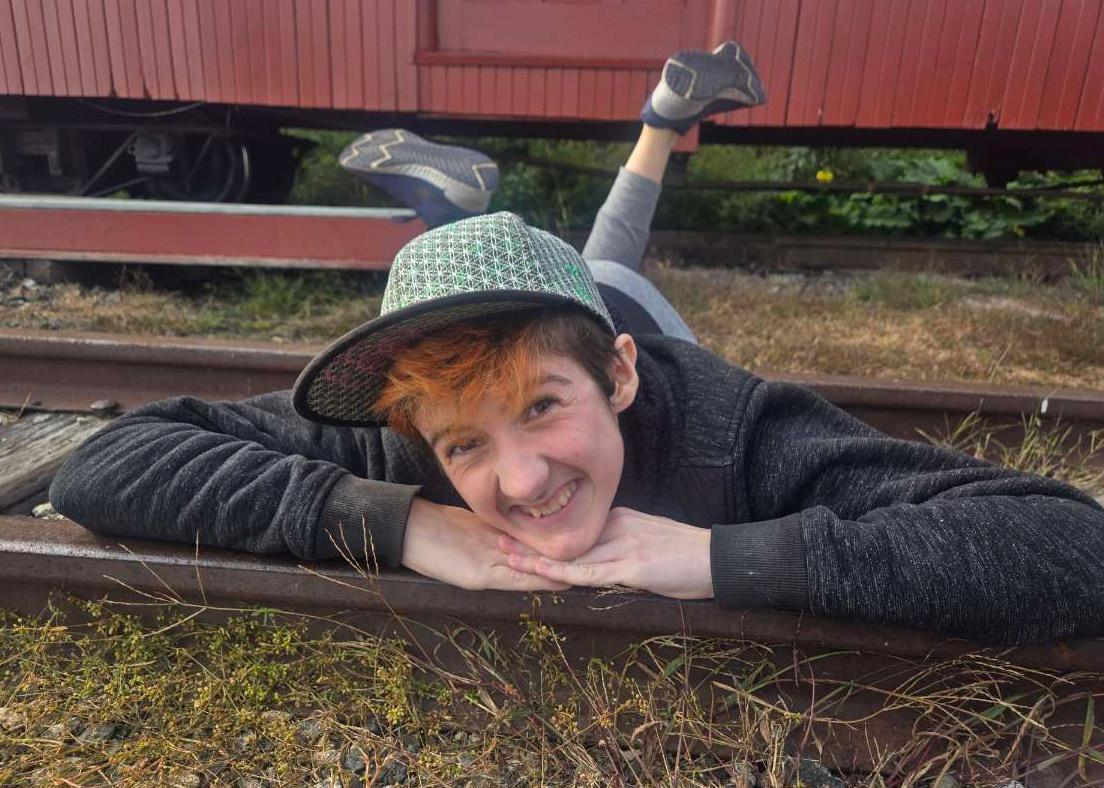




By Kellani Welch

This piece is a part of my final in intro to digital photography. The project was to create 3 photos that could all fit into a theme. The theme I chose was holiday spirit, and I took a photo of my grandmother’s Christmas tree.



By Veronica Young

This photo was one from my narrative series about learning disorders. As someone with ADHD and dyslexia, it was important to me to properly portray these disorders, and to catch what most people struggle to understand. I wanted to give the illusion of the phone pulling you in through the use of dulled colors and blurred background. I had a lot of fun with this series, and I plan on continuing it outside of school.









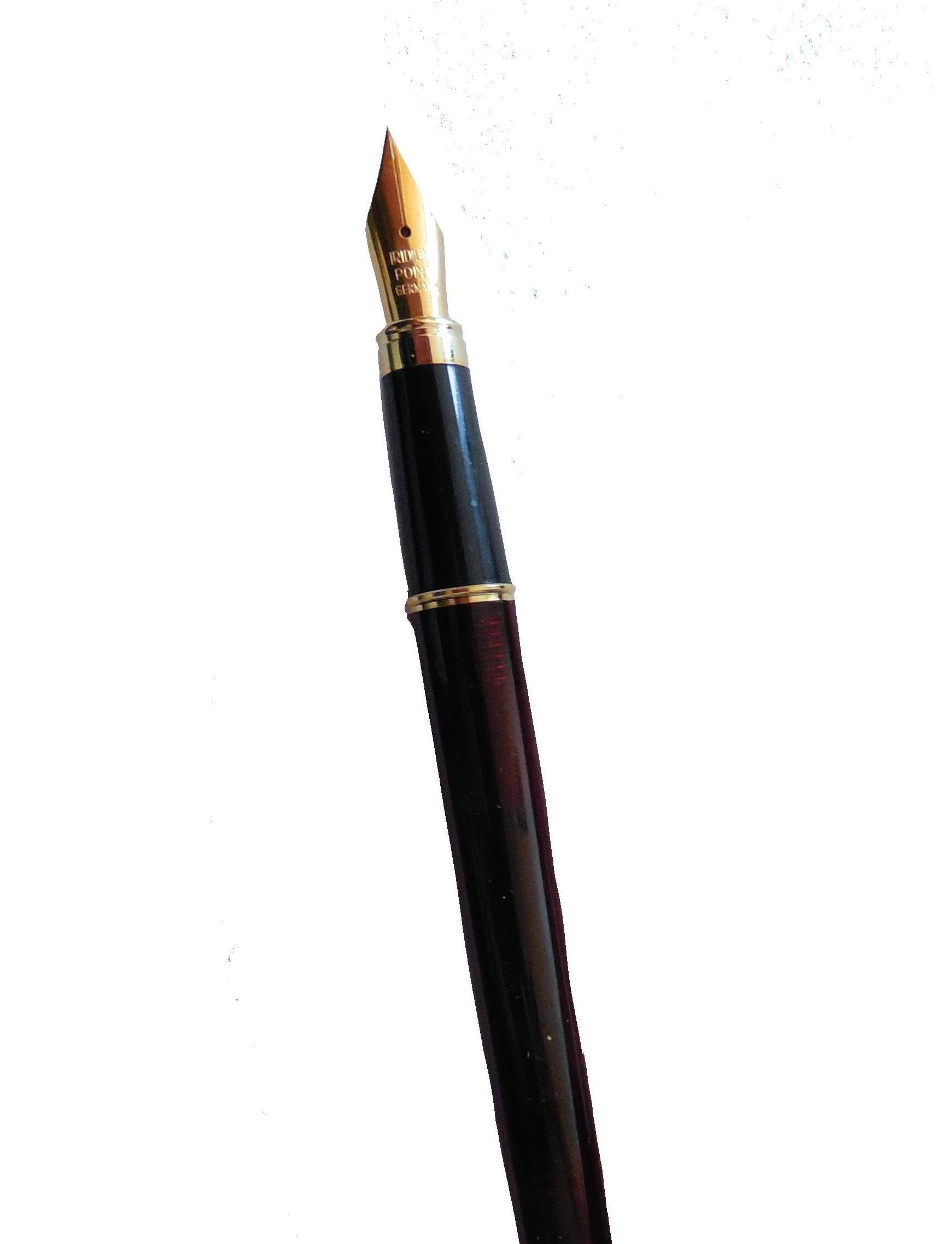





By Laura Allen
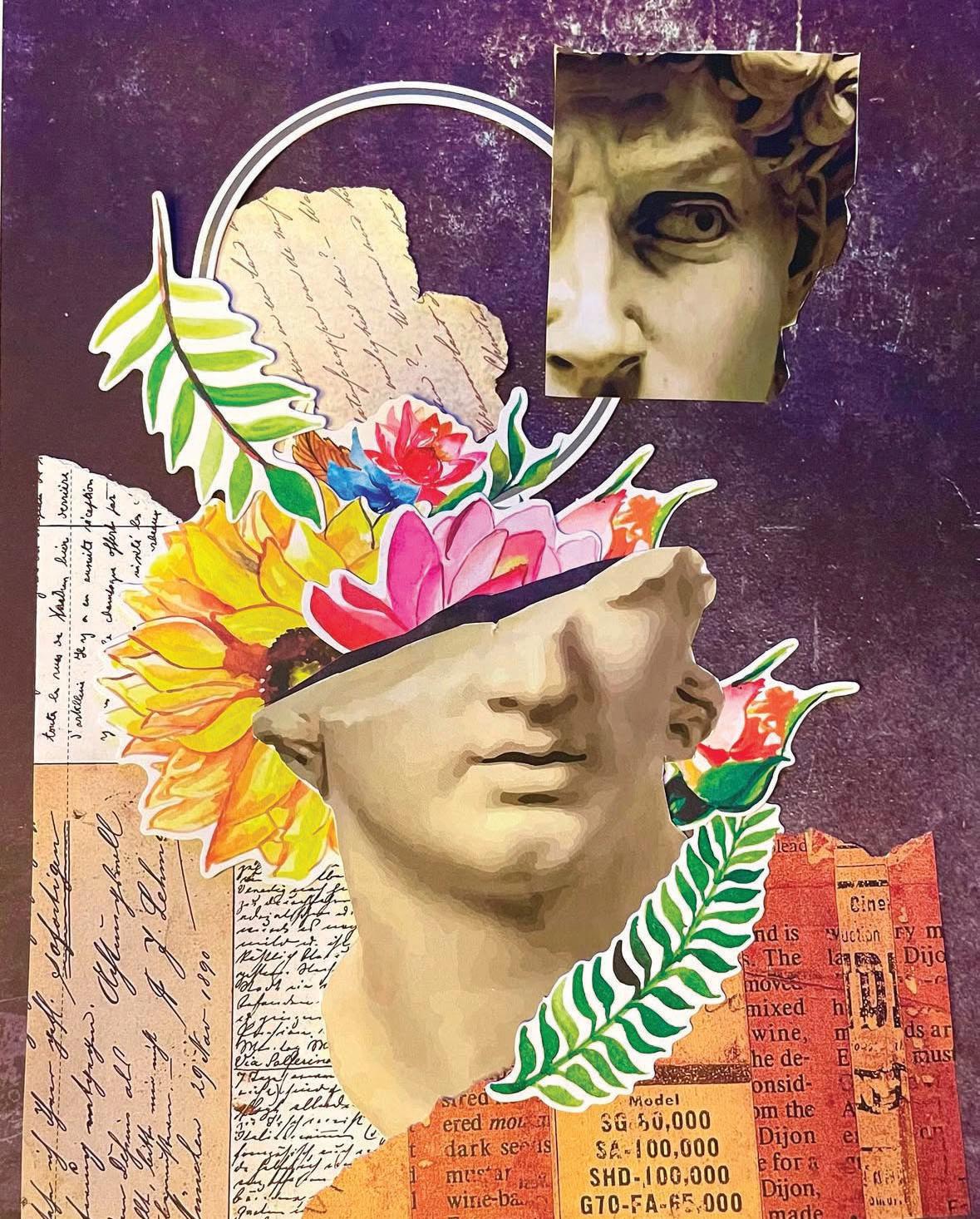
The goal for this assignment was to create an image with materials you had lying around (magazines, newspaper, Etc.) Keeping in mind art rules such as perspective, color theory, and Contrast, you create a piece that flows and meets with the style rules of 2D art with the materials you found.

By Melissa Ridel

This piece of work was created for 2D-Design. It’s called The End, it was based off something I had read, I don’t remember the title of the manga. But the art piece shows a demon warrior standing in front of an opening in the world where a monstrous being had been created by ripping a tear into the world. There is very little color since I had wanted peoples’ eyes to be drawn to the person first. I had done watercolor for the border of the drawing, because I wanted it to look like water for when I place the sharks (which is one of my favorite animals).















By Naomi Bernice C. Agbuya

The coursework was for our final project in commercial photography. The assignment was to capture a setting that would be used for a stock image in a holiday magazine. We were given different scenarios and picked 5 to create and capture, and we had to make sure the subject or focal point is what the topic is.

By Sam Burnham

For this assignment, we had to take multiple pictures of the same subject with different lighting. This was done to create one single picture that blended them all together into one image with a technique called HDR, or High Dynamic Range. The subject that I chose was my house.




By Nicole Fields

This is a dish that was homemade for the Food Photography assignment in ART 232. I took this picture by standing on a chair and holding the camera overhead.



By Nicole Fields

This is a medium shot of a dish made for the Food Photography assignment. I really like this one out of all of the shots I took for this assignment.




By Nicole Fields

This is a shot of a homemade cake for the dessert portion of the Food Photography assignment for ART 232. This picture was taken at a kneeling position, focusing in on the succulent cake and its juicy raspberries adorning the edge.



By Alexis Fitzpatrick

This assignment was from an architecture assignment where we used High Dynamic Range, to combine five different images with different exposures to give said image more depth and texture.




By Max Greiner

This piece was taken for a food photography assignment. We had to photograph a meal from several angles with different lighting and arrangements. This shot in particular was my favorite.



By Haley Hudson

For this assignment we had to create multiple stock images for a magazine. We were giving a list of themes to choose from but the way we interpret the theme was completely up to us. The images that we had to summit had to have good lighting, good composition, and no busy backgrounds.




By Benjamin Roby

The idea behind this assignment was to use everything we’d learned about photographing food and shoot a single food item as if it was intended to be featured in a recipe book, a magazine article, or marketing brochure. I decided to take an ordinary Twinkie and make it more appealing using lighting, styling, and various angles.



Veronica Young

This project for my Commercial Photography class was meant to display what we learned about food styling, as well as lighting, depth of field, composition, white balance, clarity, and color harmony. We were told to think about this assignment as if it were going to appear in a cookbook or a menu, and we were challenged to play with the setting around the food to add to its visual appeal. I bought a raspberry pastry from Frank’s Bakery in Bangor, ME, and even though I did not bake it myself, I had to give the impression that I had. I surrounded it with powdered sugar, which I sprinkled over the plate and table, and fresh raspberries to let the viewer infer that the party is raspberry.




Veronica Young

This was my Commercial Photography class final; we were assigned to take stock/editorial photographs. This photo was created to match “Cookie swap.” I wanted to play with diagonals and lighting, while also making sure to show off the incredible craftsmanship that went into creating the cookies.



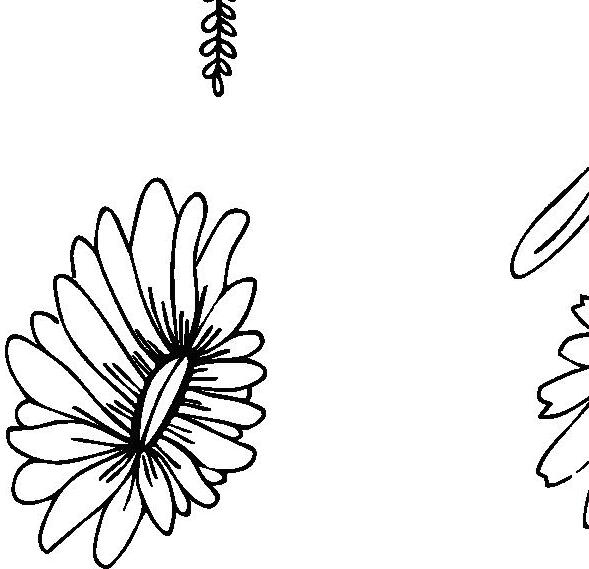



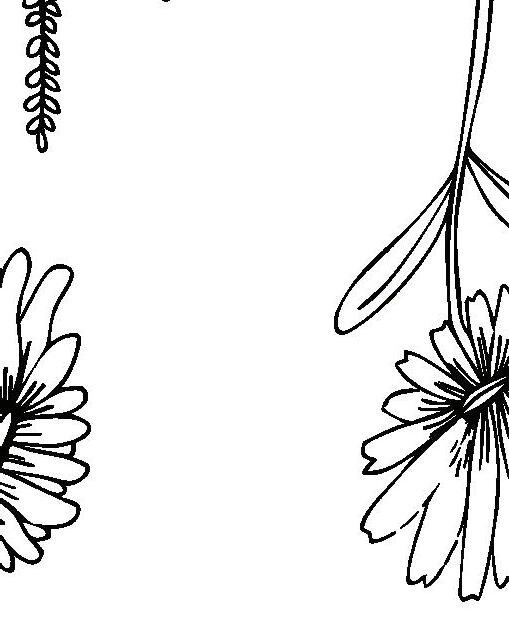
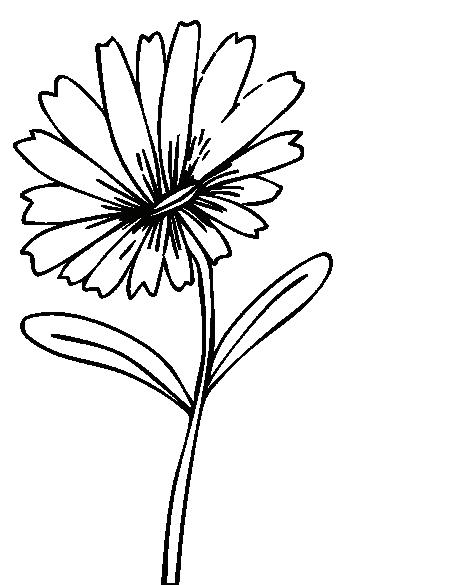


By Katyvna Allen

The Commercial Photography students were practicing their photography skills in a fast paced, industrial setting while my Culinary Arts students were preparing an assortment of vegetarian entrees.

By Katyvna Allen





By Benjamin Roby




By Benjamin Roby
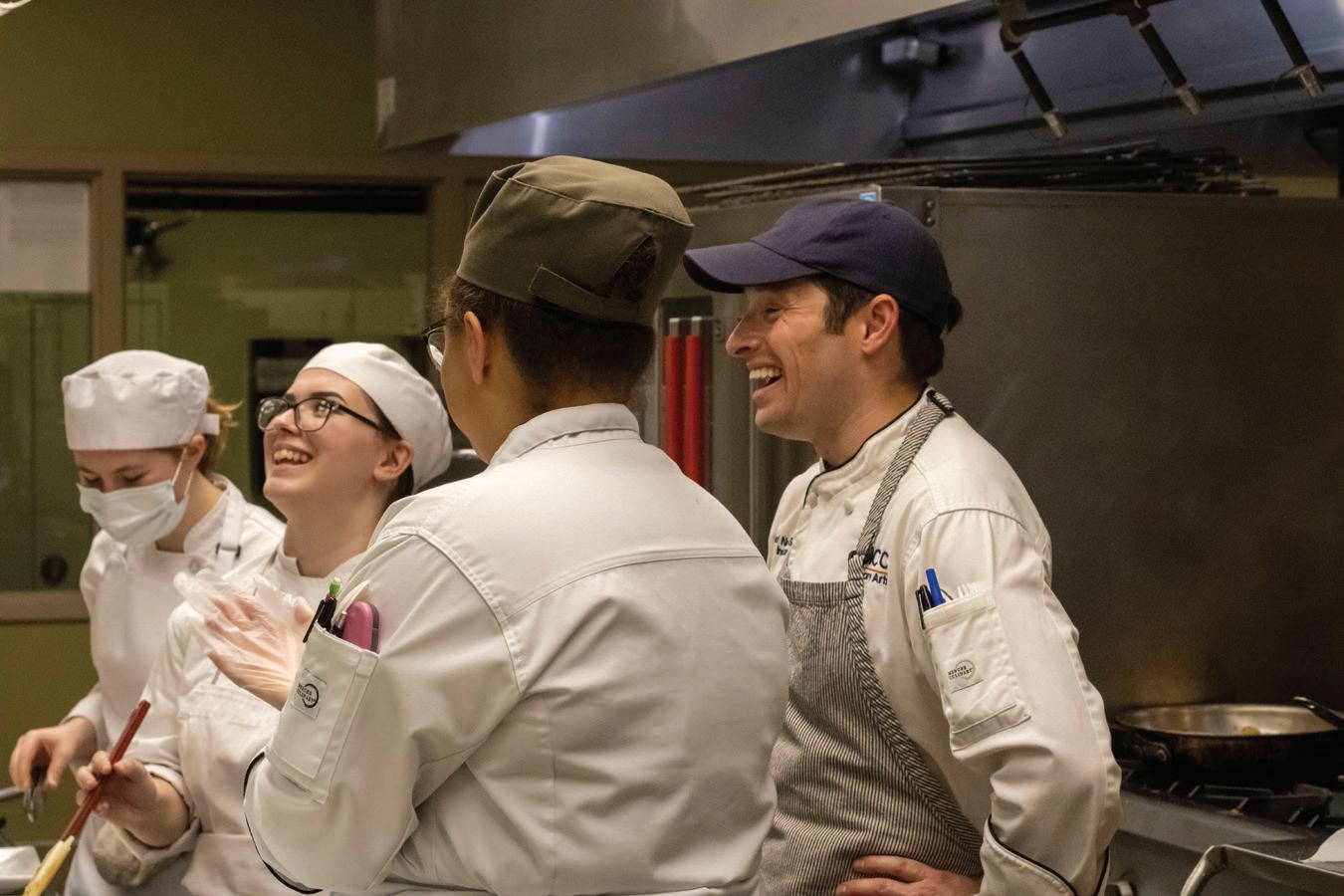




By Veronica Young










By Katryvna Allen

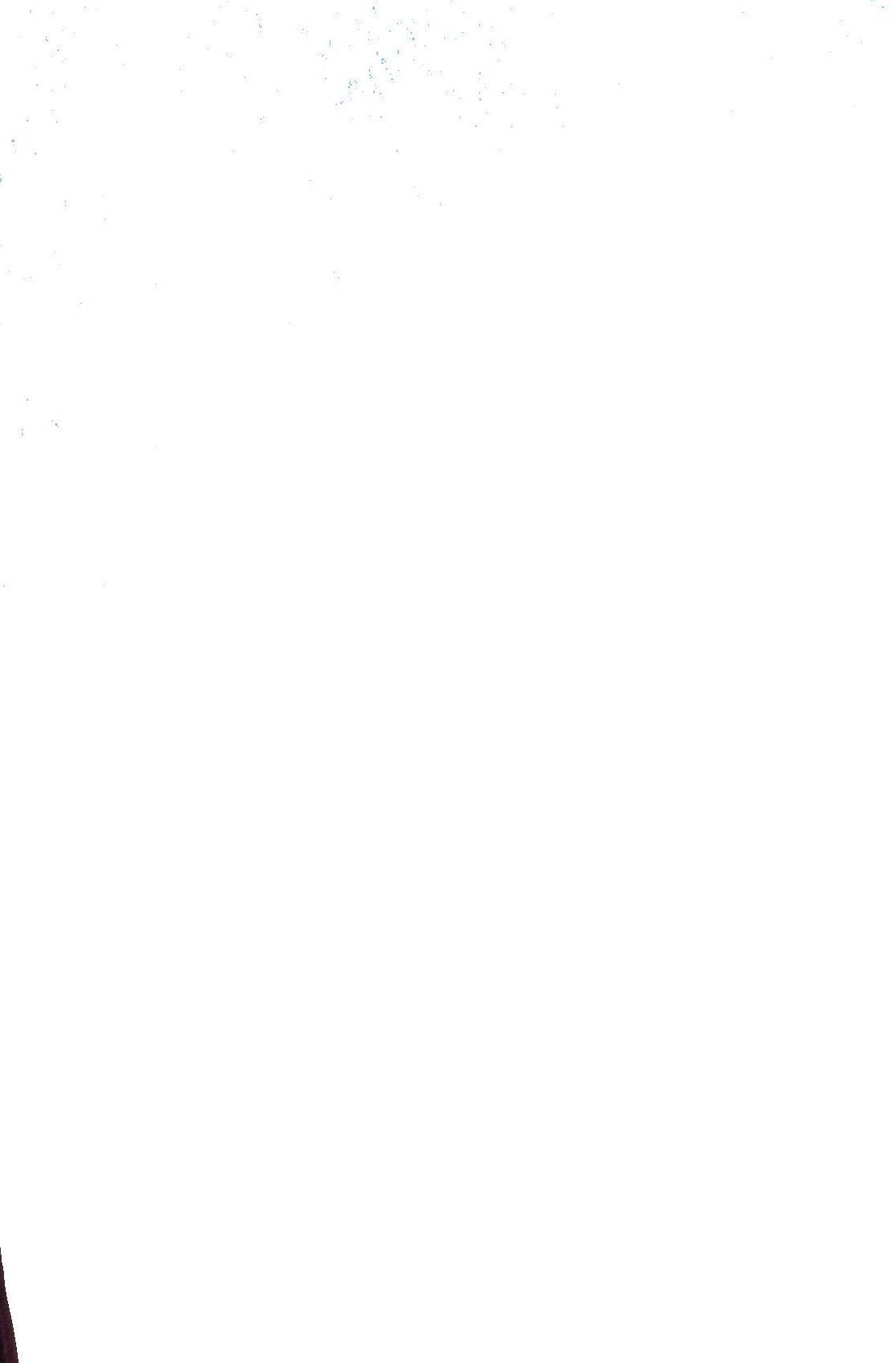

This assignment, named music box, was created for intro to photography where we were tasked with merging together a series of images and making them look like they were meant to be that way. My take on this assignment was to build a living music box, where the ballerinas were spinning on a pocket watch. The ballerinas themselves were inspired by swan lake, and the clock used to show the time. Life and death as they were shown with white roses and wilted roses. The box is meant to be worn and overgrown in a way to give a vintage feel to it.

By Ryan Gott

For this assignment we were tasked with creating a portrait using the pen tool in photoshop. Each color was made by drawing with the pen tool and converting the shape into a path. The subject of my portrait is Papa Emeritus IV, the frontman of the band Ghost.




By Ryan Jipson

This was my 7th Photoshop Assignment. Our prompt was to make a fantasy/surreal setting using stock imagery. I created a floating bleeding head, swarmed with moths.



By Aidan Mowry

This art piece I call Grimm Snow White it was made for the class Intro To Photoshop DGD 113. This art was made for a project where we had to take stock images and use them to make a water paint art piece by using other tools to give the image a look and feel of water paint. When I was working on the project I knew from the start I wanted to do a kind of dark fairy tale so I went with Snow White and the cursed apple.




By Ella Orcutt

This piece is called Jackalope, it was an assignment for DGD 133 Introduction to Photoshop. I was tasked with creating a fantasy or surreal composition using images of real animals or objects. I created a Jackalope, a fictional hybrid of a jackrabbit and an antelope. I am very proud of the piece as it was one of my first large photoshop projects and it turned out better than I was expecting.



By Emily Pelletier

The title of this art piece is called “Greetings from Bangor.” It was created for the DGD 113 01 Intro to Photoshop class. The goal of the assignment was to combine several images to create a piece that resembles a vintage postcard. Traditionally, most vintage postcards were printed in black-and-white, but some vintage postcards were colorful (typically through means of being hand painted). That is the aesthetic I was aiming for when I photoshopped this art piece. As such, the warped texture effect I implemented is meant to invoke the appearance of paint.




By Sara Smart


The assignment for this project was Fantasy/Surreal Composition. You must create something fantasy or unreal, up to the person’s imagination. However, you can find images online and edit them in Abode Photoshop. One rule that had to be followed was no Abode filters, a helpful shortcut, so you had to handmake everything with Abode tools.











By Ryan Gott

For this assignment, we practiced making an appealing layout for a small newspaper ad while incorporating all the necessary information. Using Adobe Indesign, I put together all the required text and images to make the ad visually appealing


